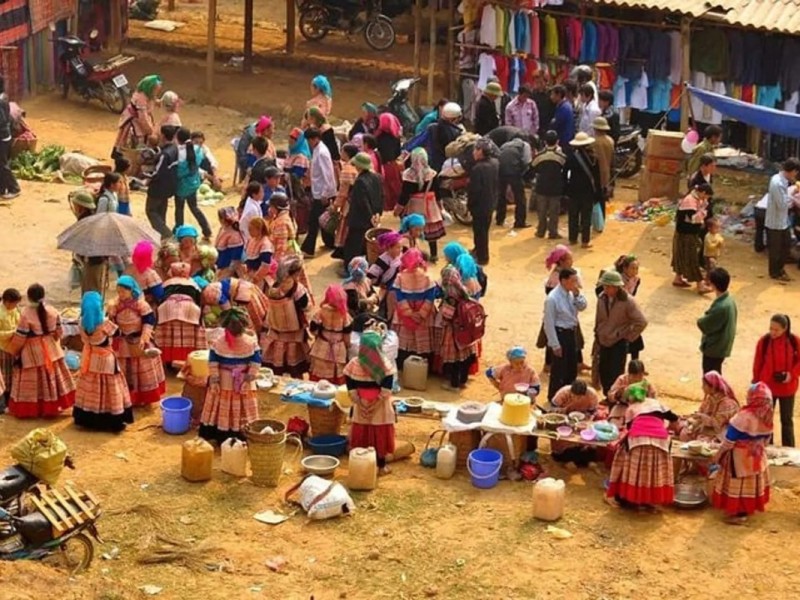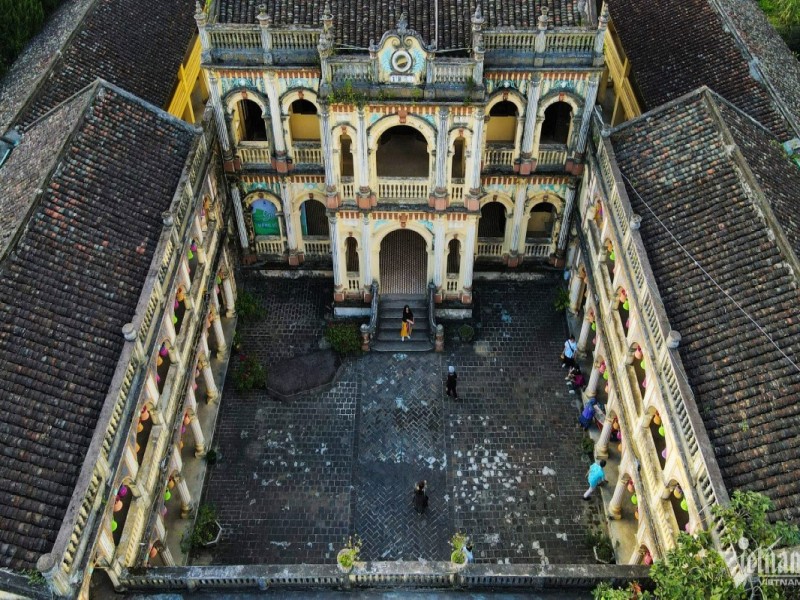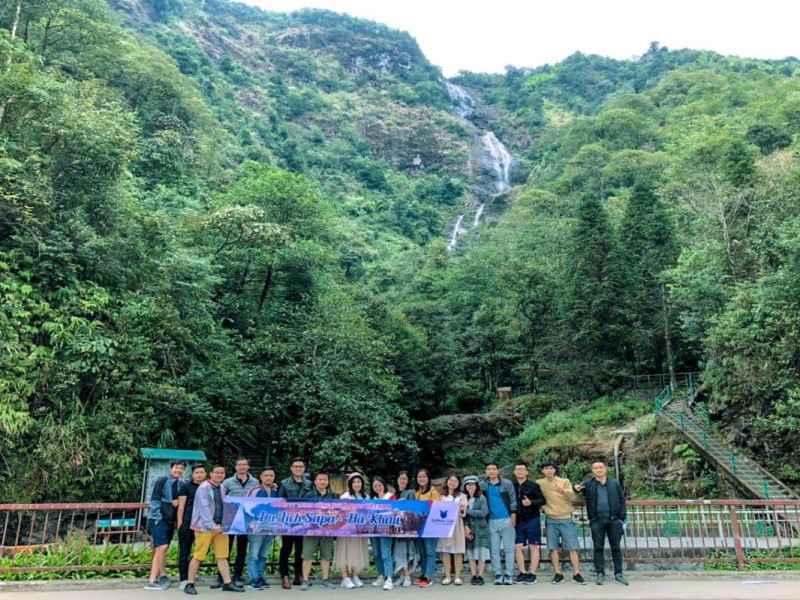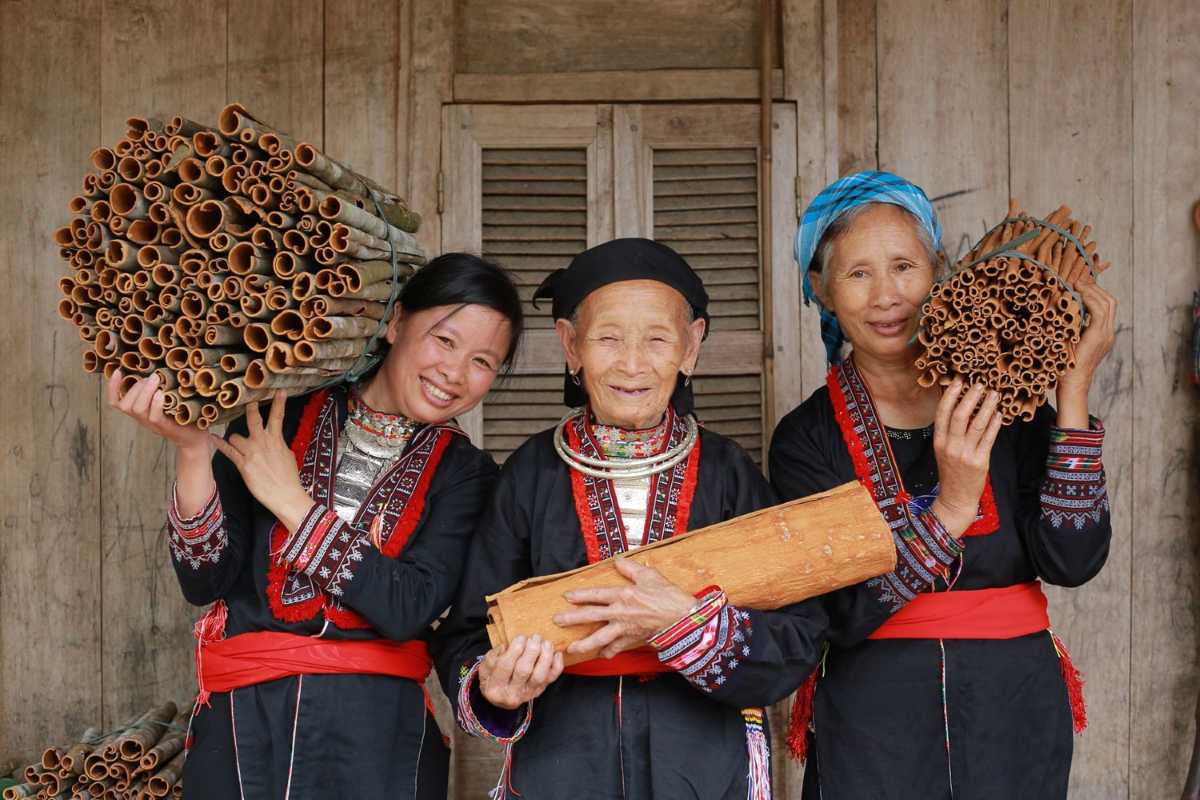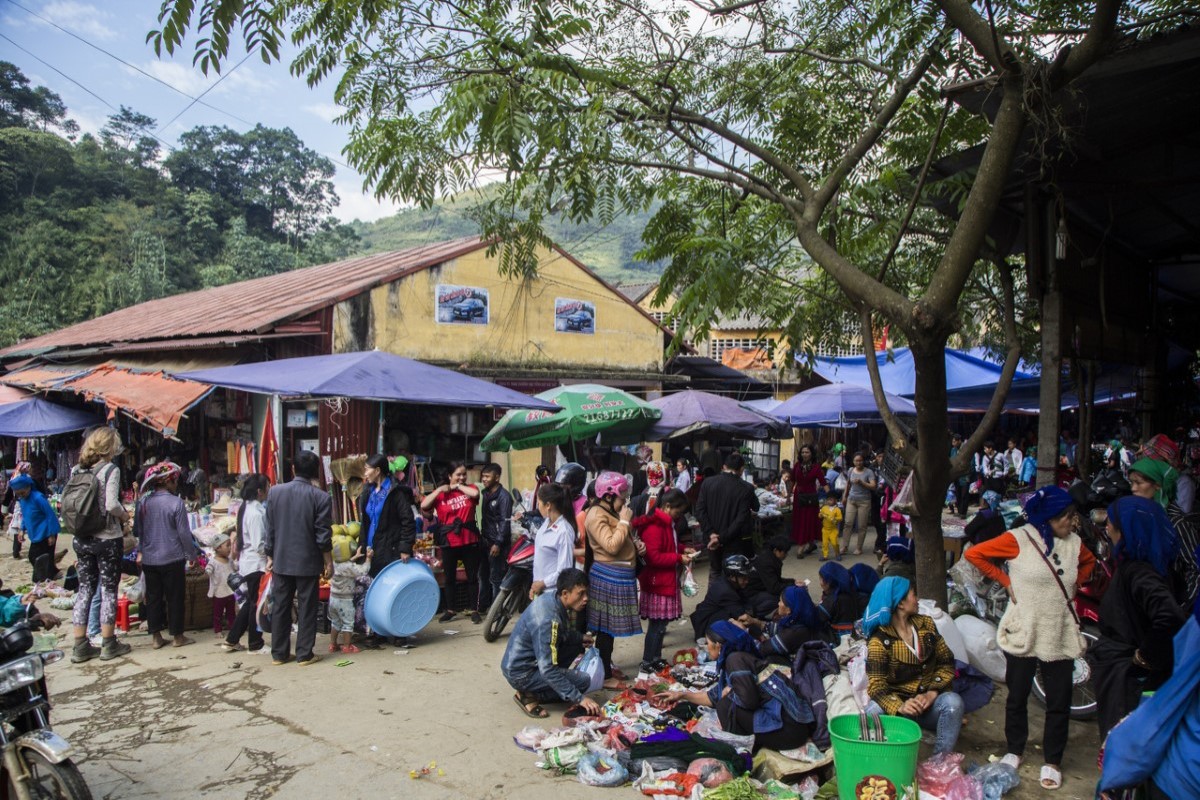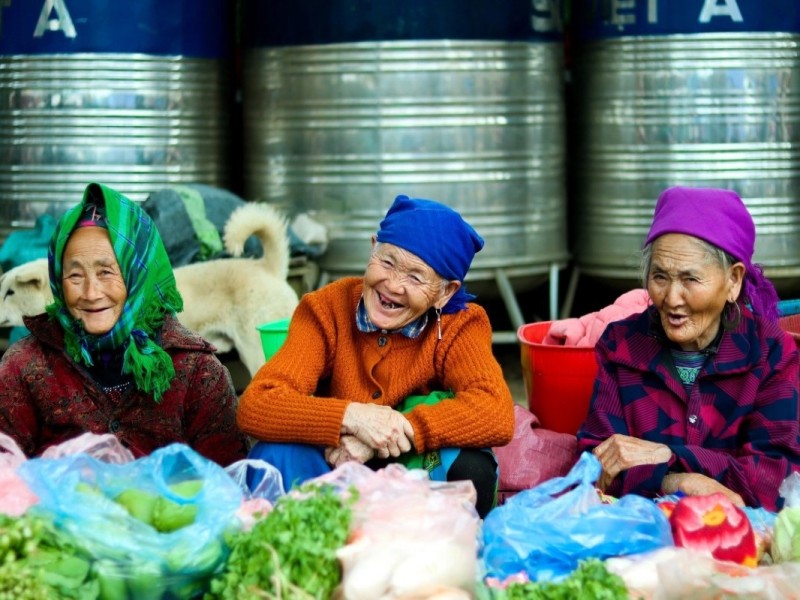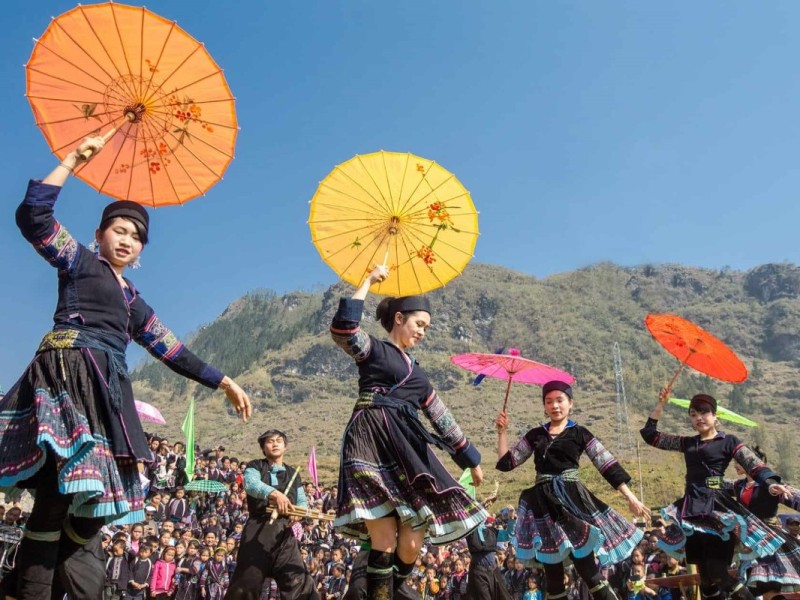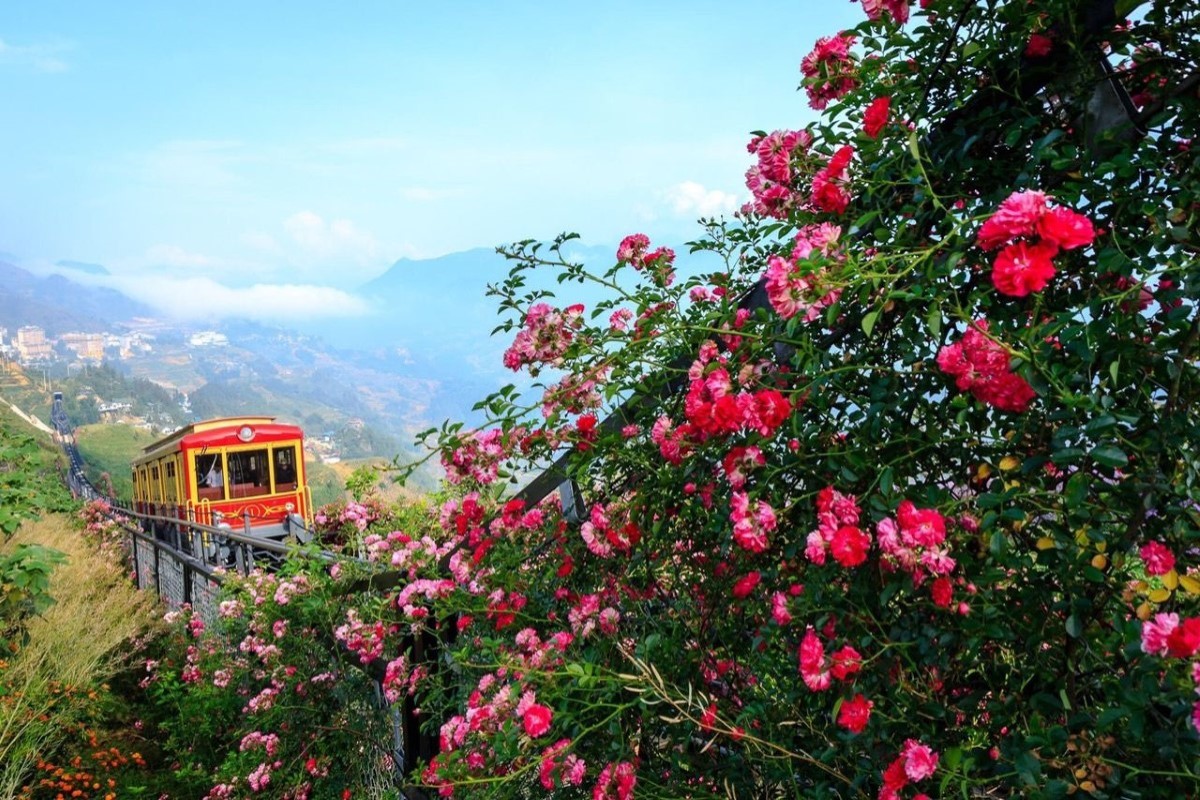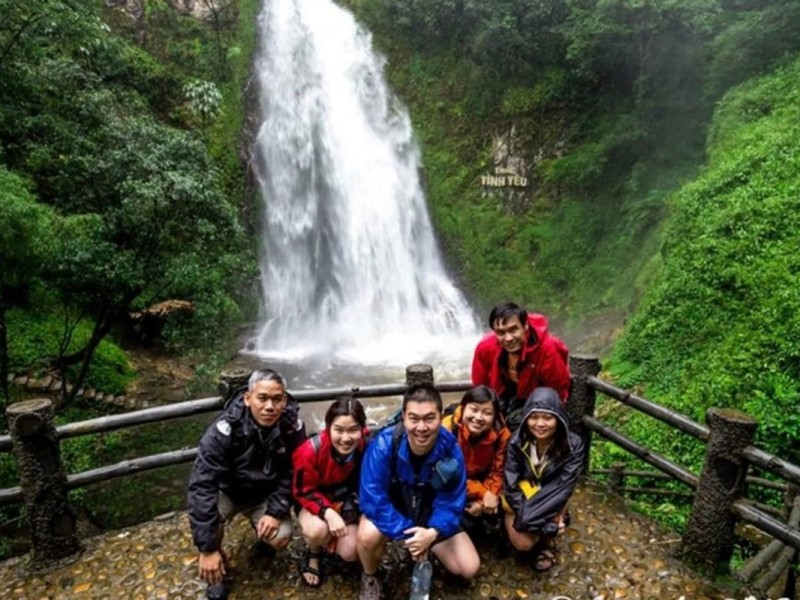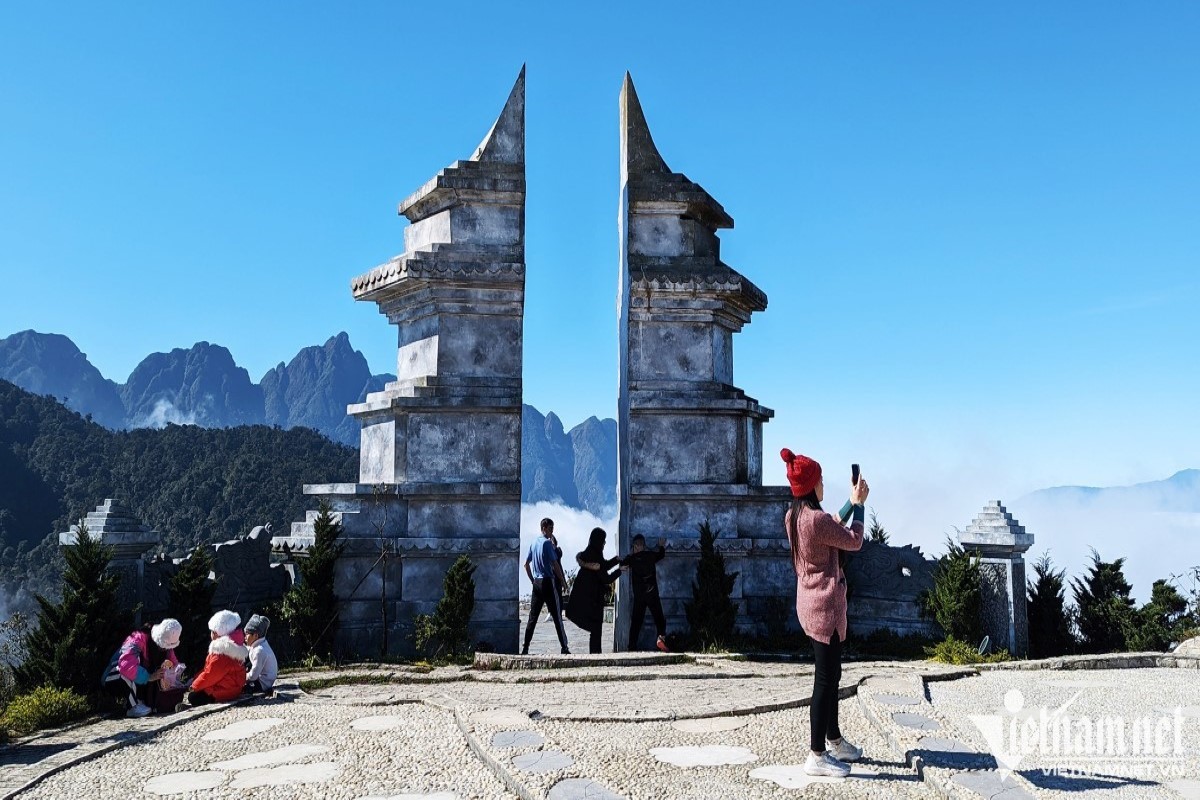Cao Son Market Lao Cai: Complete Travel Guide & Visitor Experience
Cao Son Market in Lao Cai is a vibrant highland market where ethnic communities gather weekly to trade local goods, experience unique cultural traditions, and enjoy authentic northern Vietnamese cuisine. Its remote mountain setting, diverse groups, and lively atmosphere make it a standout destination for genuine cultural immersion.

Get to Know Cao Son Market: A Unique Highland Experience
There’s a hush in the early morning air as the mists begin to lift above the rugged hills of Northern Vietnam. That’s when you first sense the spirit of Cao Son Market, a place untouched by mass tourism and alive with local rhythm. Perched far from the busy highways and city lights, this highland market pulses with the anticipation of discovery. Its remote setting promises a genuine connection to highland culture—an invitation to step into a world shaped by generations of tradition. Travelers drawn to unique travel experiences Vietnam often find themselves captivated here, where the landscape and market blend into a colorful, living tapestry.
You’ll immediately notice the difference. The path to the market winds through terraced rice fields and sleepy hamlets, each step building anticipation. Soon, the vibrant sounds and sights of a gathering that has endured for centuries greet you—Cao Son Market is not just a place to shop, but a portal into the heart of Northern Vietnam markets. The deeper you wander, the more you realize this isn’t just another stop; it’s an authentic travel moment, rooted in local traditions, that sets the tone for everything to come.
Let your curiosity guide you as you explore what makes this highland gathering such an unforgettable encounter. If you’re ready to discover a market where true Vietnamese heritage still thrives, you’re in the right place—Cao Son Market is waiting to reveal its secrets.
Ready to learn more? Let’s start your journey with a walk through the living heart of the market itself.
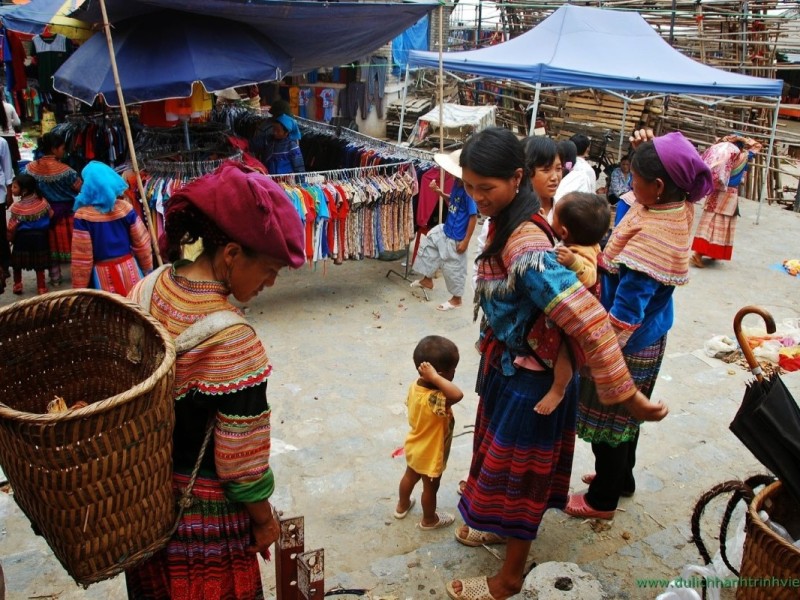
Discovering the Heart of Cao Son Market
Arriving at Cao Son Market is like stepping into a vibrant sensory celebration. The first thing that strikes you is the medley of sounds—lively chatter in local dialects, the rhythmic calls of livestock, laughter floating through the crisp highland air. The aroma of freshly ground spices and earthy produce lingers, mingling with the sweet scent of steaming street food. Colors spill across your vision: embroidered costumes, woven baskets, and heaps of fresh vegetables form a kaleidoscope unique to this market.
This isn’t a tourist show; it’s an authentic Vietnam market experience that unfolds every week for the local community. Vendors and buyers, mostly from nearby ethnic villages, gather not only to trade but to reconnect, share news, and celebrate traditions. The highland market culture here feels personal—every handshake, every smile, is a piece of local life, preserved and proudly on display. For many, Cao Son Market becomes a sensory guide, providing the clearest window into the soul of the region.
There’s no rush here, only the steady pulse of tradition. It’s easy to see why those in search of authentic travel find themselves enchanted. From the rhythm of early arrivals to the casual exchanges between neighbors, every moment adds a new layer to your experience. For an honest taste of highland culture, this market stands apart.
Let yourself be swept up in the sights, sounds, and smells—and don’t forget to bring your curiosity. Stay tuned for tips on how to get the most out of every minute you spend at Cao Son Market.
What Makes Cao Son Market Different from Other Northern Markets
What truly sets Cao Son Market apart from places like Bac Ha, Sapa, or Can Cau? Here’s how this highland hub stands out in a region full of storied gatherings:
- Scale and Crowd: Smaller in size, but with a cozier, less-commercial feel than Bac Ha or Sapa—you’re likely to meet more locals and fewer tourists.
- Ethnic Diversity: Home to a high concentration of less-seen groups such as Hmong Hoa, Phula, Dao, and Nung, offering unique opportunities for cultural encounters.
- Market Focus: The emphasis here is on livestock, indigenous produce, and true daily necessities—not mass-produced souvenirs. You’ll see more authentic wares and fewer tourist trinkets than at Can Cau.
- Deeply Rooted Traditions: The market’s vibe feels more like a village gathering than a commercial event, with real bartering, gossip, and matchmaking still at the center of things.
- Location and Setting: Nestled deeper into the hills, the remote setting makes every visit an adventure in itself—and the journey is half the reward.
In summary, Cao Son Market is where highland heritage and hospitality meet. If you crave an authentic market Vietnam experience, far from the well-worn tourist paths, this market offers something genuinely special.
Ready to compare more? Keep reading for a look at the region’s rich history and how this highland market has evolved into a cultural icon.
Anya's Market Musings: Why Cao Son Felt Different
Most markets in Vietnam are a whirlwind for the senses, but my recent journey to Cao Son Market in Lao Cai wasn't just another colorful blur; it was an intimate, almost whispered conversation with a culture that felt genuinely untouched, unlike any other market experience I'd ever encountered.
My journey started before dawn, the crisp highland air biting just enough to awaken my senses. The winding road, still shrouded in mist, unspooled through emerald rice paddies and past humble stilt houses. Expectations? A vibrant, busy market, yes, but I braced myself for the familiar tourist gauntlet. What unfolded was something entirely different.
As the sun began to peek over the jagged peaks, painting the sky in fiery oranges and soft purples, I arrived. Instead of the cacophony I anticipated, there was a gentle murmur, a slow gathering. Ethnic minority groups—Hmong, Phu La, Dzao, and Tay—emerged from the misty hills, their traditional attire a vibrant tapestry against the muted landscape. They carried baskets laden with produce, led buffalo by rope, or simply walked hand-in-hand, their faces etched with the stories of generations. This wasn't a performance for tourists; this was life.
I walked among them, initially feeling like an observer, but soon, the warmth of genuine smiles began to break through. There was no aggressive touting, no insistent calls to buy. Instead, quiet nods, curious glances, and often, an invitation to simply observe. I watched a Hmong woman carefully arrange bunches of wild herbs, her nimble fingers working with practiced grace. I saw a group of men patiently bartering over a buffalo, their negotiations calm and respectful. The "aha!" moment hit me when I found a small stall selling intricately embroidered baby carriers. The vendor, a young Dzao woman, didn't pressure me. Instead, she quietly showed me the stitches, explaining through gestures and a few broken English words from a nearby friend that each pattern told a story. Her pride in her craft was palpable, untainted by commercial urgency. It felt less like a transaction and more like a shared moment of cultural appreciation. This genuine interaction, devoid of the usual tourist-trap pressure, was the differentiator. It connected me to the authentic market review that travel blogs often promise but rarely deliver.
The air itself held a unique scent—a mix of woodsmoke, damp earth, fresh produce, and the subtle, earthy aroma of Thang Co simmering over open fires. I savored a bowl of fragrant noodle soup, sitting on a tiny plastic stool, surrounded by locals laughing and chatting in their distinct dialects. The warmth of the broth, the unexpected sweetness of a wild berry, the rough texture of a hand-woven scarf against my fingertips—every detail grounded me deeper in this unique highland experience. This personal experience Cao Son offered wasn't just about seeing; it was about truly feeling the rhythm of a community.
Having explored numerous markets across Southeast Asia, Cao Son stands out for its raw, unpolished authenticity. It feels less curated and more organically vibrant. My key takeaway is that its magic lies in its undisturbed local life. The vendors aren't there primarily for tourists; they're there for their communities. This creates an atmosphere of genuine interaction, far removed from the more commercialized markets you might encounter elsewhere in Vietnam. It's a place where you observe life, rather than being part of a tourist spectacle.
Actionable Practical Takeaways:
- Go Early, Stay Late: Arriving by 7 AM allows you to witness the market's gentle awakening and avoid any later, minimal crowds. Stay until early afternoon to see the winding down process.
- Bring Small Denominations: Transactions are primarily cash, and small bills are essential for easier bartering and purchases. ATMs are scarce nearby.
- Embrace the Language Barrier: Don't let a lack of shared language deter you. A smile, gestures, and a genuine willingness to connect often open doors to incredibly rewarding interactions. Try learning "Xin chào" (hello) and "Cảm ơn" (thank you).
- Observe Respectfully: Remember you are a guest in a living cultural event. Ask permission before taking photos of people, especially children. Avoid intrusive close-ups unless invited.
- Taste Everything: Be adventurous with the local food! Look for stalls that are busy with locals – a good sign of freshness and taste. Don't miss the local corn wine.
- Shop Authentically: Focus on handmade textiles, intricate silver jewelry, and unique local produce. Inquire about the origin and the artisan; you're supporting genuine craftsmanship.
Cao Son Market isn't just a place to buy goods; it's a living museum, a vibrant social tapestry woven from the traditions of its people. It's a reminder that genuine travel isn't always about grand monuments, but often about finding the quiet, unfiltered moments that connect you to the soul of a place. My visit wasn't just a trip; it was an emotional journey that left an indelible mark on my heart and a profound appreciation for the enduring spirit of Vietnam's highlands.
Recommendation: If you are a traveler seeking true authenticity, a deep dive into local culture, and an experience far removed from the well-trodden tourist paths, then Cao Son Market is an absolute must-visit. Go with an open heart, a curious mind, and a willingness to simply be present, and you'll discover a piece of Vietnam that will stay with you long after you've left.
The Role of Ethnic Minority Groups in Cao Son Market Life
Step into Cao Son Market and you enter a living mosaic shaped by the region’s remarkable ethnic diversity. Each week, communities including the Hmong, Phu La, Dao, Tay, Nung, and Giay gather from remote mountain villages, creating a vibrant and ever-changing scene. These groups bring not only their goods but the heart of their unique cultures, traditions, and stories.
- Hmong: Known for their brightly embroidered costumes and strong sense of community, the Hmong are among the most visible groups at the market. They come to trade livestock and handicrafts, catch up with friends, and sometimes seek partners in marriage.
- Phu La: Less numerous but easy to spot by their distinct headscarves and understated style, Phu La vendors often sell foraged herbs, mushrooms, and rare local fruits found only in the highlands.
- Dao: Easily recognized by their red headdresses and silver jewelry, the Dao women are respected herbalists and skilled in making natural dyes. Their presence gives the market a burst of color and wisdom.
- Tay: The Tay people are famous for their weaving, rice farming, and graceful hospitality. They often bring rice, woven goods, and stories to share, creating bonds with other groups.
- Nung and Giay: These groups add even more color and sound, whether selling bamboo baskets, sharing folk songs, or joining in lively market-day conversations.
The contributions of these communities reach far beyond buying and selling. Cao Son Market becomes a space for socializing, exchanging news, and celebrating shared traditions—a hub where local culture flourishes in every handshake and smile. Marriages are arranged, friendships deepened, and ancient customs carried forward in a place that’s both economic engine and cultural cornerstone.
If you’re eager to connect with the heart of highland Vietnam, spend time at the market stalls, greet vendors with a respectful smile, and listen to the stories behind each product. You’ll gain not just souvenirs, but a genuine appreciation for the social richness that defines Cao Son Market.
Curious to learn more about the roots and rituals that make this market so unforgettable? Keep reading for a journey into its colorful history and traditions.
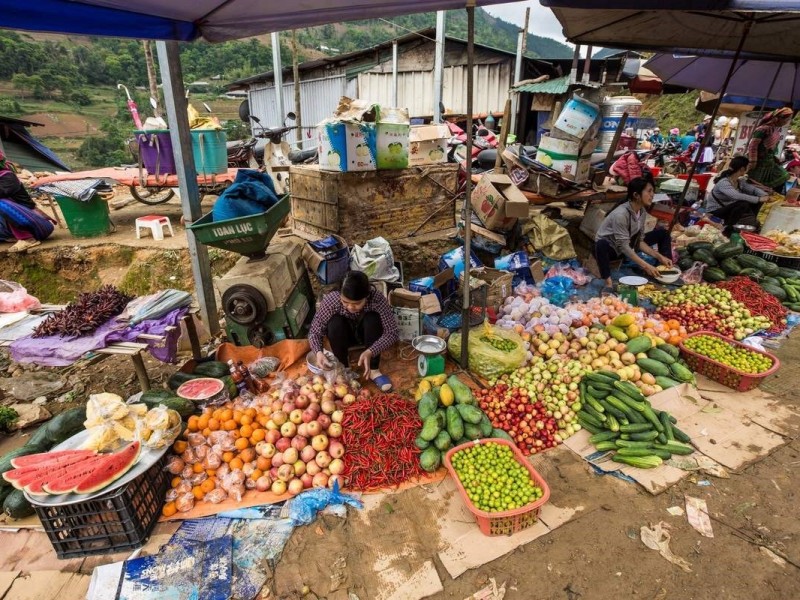
A Glimpse into History and Cultural Traditions
Cao Son Market stands as a testament to the resilience and enduring spirit of the highlands. For centuries, it has been the lifeblood of nearby villages, linking generations through commerce and tradition. This market’s story weaves together threads of adaptation and heritage, surviving the changing tides of modern life while holding fast to its roots. As the world around it evolves, Cao Son Market remains a living bridge to the past, where the customs and values of Lao Cai’s people still shine. Every visit becomes a walk through layers of memory, each step echoing with stories of trade, celebration, and cultural pride.
Whether you’re fascinated by the history of Cao Son Market or simply drawn to its living traditions, you’ll find this is more than just a place to buy and sell. It’s a gathering that preserves the cultural heritage of Lao Cai, welcoming all who wish to understand and respect its legacy.
Travelers eager to connect with Vietnam’s authentic highland spirit will find inspiration in the market’s proud history—and new stories to bring home. Let’s look deeper into how this remarkable place began, and how it has continued to shape local life.
Ready to explore the roots of Cao Son Market and discover what makes its history truly unique? Continue on for a journey through origin stories, legends, and colorful rituals.
Origins and Evolution of Cao Son Market
To understand the enduring presence of Cao Son Market, you must look back to its beginnings as a humble trading post along ancient mountain routes. Set at a crossroads where clans and traders would meet, the market became a vital exchange point for salt, textiles, medicinal herbs, and daily necessities. Over time, it evolved into a social and economic hub for the region.
- Strategic Trading Post: The market’s location made it a natural gathering place for diverse ethnic groups, fostering both economic and cultural connections.
- Clan Gathering Point: Historically, families and clans from across the highlands have used Cao Son Market as a weekly anchor for meeting, sharing news, and strengthening social ties.
- Adaptation Through Change: Despite the rise of modern roads and towns, the market’s traditions have endured, with new goods and faces adding to its richness while old customs hold steady.
- Oral Legends and Local Lore: Tales passed down through generations tell of legendary clan leaders, auspicious meetings, and the importance of market day as a time of luck and opportunity.
- Environmental Influences: Shifts in trade routes and environmental challenges have shaped how and when the market thrives, with each season adding its own rhythm to local life.
From its first days as a gathering for necessity, Cao Son Market has become a living monument to highland perseverance and unity, reflecting the larger Lao Cai trade history and the evolution of highland markets throughout the region.
Those looking for deeper meaning in their travels will discover that every transaction at Cao Son Market is part of a legacy that stretches back through generations.
If you want to truly understand a place, start by listening to its legends and following the paths trodden by locals for centuries. You’ll leave with much more than souvenirs.
Colorful Costumes, Customs, and Weekly Rituals
No visit to Cao Son Market is complete without soaking in the visual poetry and rhythmic traditions that make each market day unique. Here, culture is not just preserved—it is performed and celebrated with every thread, gesture, and ritual.
- Traditional Attire: Ethnic groups don their finest garments, from the bold embroidery of the Hmong to the shimmering headscarves of the Dao. Each detail reflects history, status, and local identity.
- Symbolism in Color and Pattern: Colors and patterns are more than decorative. Indigo blue often represents protection, while silver jewelry wards off bad luck. Every accessory tells a story.
- Morning Greetings and Rituals: Early risers will witness customary greetings, hands pressed together or clasped in friendship, and communal breakfasts that set the day’s tone.
- Bartering and Social Exchange: Beyond haggling for goods, bartering is a ritual of respect—an opportunity to build relationships and practice centuries-old etiquette.
- Family Gatherings and Communal Meals: Families reunite over market meals, share updates, and reaffirm bonds that stretch across villages and generations.
By observing these costumes and customs, visitors gain a window into the shared values and collective memory of Lao Cai and the wider highland region of Vietnam.
If you want to experience the true depth of Cao Son Market, take time to notice the details—each gesture, color, and meal is a living thread in a vibrant cultural tapestry.
Chloe's Cultural Canvas: Witnessing the Colors of Cao Son
My first glance at Cao Son Market wasn't just seeing a market; it was stepping into a masterpiece, a living canvas painted with the deepest indigos, the brightest fuchsias, and the gleam of ancient silver. Forget the muted tones of city life; here, every step was a brushstroke of vibrant, raw culture, a sensory journey Cao Son gifted me, unlike anything I'd ever witnessed.
The morning mist was still clinging to the distant mountains when the first figures began to emerge, splashes of color against the verdant backdrop. My heart quickened. As they drew closer, the details came into sharp focus: the deep, almost black indigo of the Hmong women’s pleated skirts, meticulously hand-dyed over weeks, contrasting with the bursts of fuchsia and lime green embroidery that adorned their bodices. Then came the Dao, their elaborate red and black headscarves intricately folded, often shimmering with silver coins. The Phu La women wore striking patterns of white and red, their silver necklaces clinking softly with each step. It wasn't just clothing; it was identity, history, and artistry worn with proud dignity.
The market began to hum. It wasn't the aggressive roar of a city market, but a rhythmic symphony. The unique calls of vendors, each with their distinct rhythm, floated through the air – a melodic chant for fresh vegetables, a low, guttural murmur for livestock, punctuated by the occasional surprised squawk of a chicken. Beneath it all, the murmur of conversations in languages I didn't understand yet felt profoundly intimate. The soft clatter of goods being laid out, the rustle of fabrics, the gentle clink-clink of silver jewelry as women moved – it all blended into a captivating soundscape that pulled me deeper into the scene.
I remember watching a Tay woman, her hands calloused but deft, sorting through a pile of vibrant green herbs. Her movements were economical, graceful, a testament to generations of practice. Across from her, a young Hmong girl, perhaps no older than seven, already wore a miniature version of her mother’s traditional outfit, carefully helping arrange small bundles of ginger. There was a timeless quality to their interactions, a rhythm that had been passed down through centuries. It was the feeling of witnessing traditions Vietnam has held dear, unfolding organically before my eyes, not for show, but as the very fabric of their existence. The richness of the embroidery, the glint of hand-hammered silver on a woman's wrist, the warm, earthy smell of roasted corn mingling with the sweet scent of local fruits – every detail was a testament to a vibrant, living culture.
What truly makes Cao Son a "cultural canvas" is the visible pride and self-sufficiency of the ethnic groups. Unlike some markets where traditional dress might feel a bit like a costume for tourists, here, it's their everyday attire, worn with genuine purpose. My experience showed me that the sheer effort involved in creating these garments – from cultivating indigo to hand-stitching intricate patterns – deepens one's appreciation immensely. It highlights not just their aesthetics but their profound cultural significance. The market is less about transaction and more about community, where these colors, sounds, and interactions are simply the natural expressions of their way of life.
Actionable Practical Takeaways:
- Look Beyond the Surface: Don't just see colorful clothes; look for the intricate details of embroidery, the patterns on headscarves, and the craftsmanship of silver jewelry. Each tells a story.
- Engage with Eye Contact and Smiles: Even without a shared language, a genuine smile and respectful eye contact can bridge cultural gaps and lead to surprisingly warm interactions.
- Listen Actively: Pay attention to the subtle sounds of the market—the distinct calls, the rhythm of bartering, the different dialects. It's a key part of the immersive experience.
- Consider a Local Guide: If possible, hire a local guide who can explain the significance of different ethnic costumes and customs. This adds immense depth to your understanding.
- Support Local Artisans: When purchasing textiles or silver, inquire about the making process. Buying directly from the artisans ensures your money directly supports their traditional crafts.
Stepping away from Cao Son Market, I carried not just souvenirs, but a kaleidoscope of memories. The vibrant hues, the subtle melodies, the honest faces—they etched themselves onto my mind, a breathtaking cultural canvas that continues to unfold in my memory. It wasn't just a market visit; it was a profound, Cao Son cultural experience that resonated deep within me, a testament to the enduring beauty of tradition.
Recommendation: For anyone yearning for an authentic, deeply immersive encounter with Vietnam's ethnic highland cultures, Cao Son Market is an absolute essential. Prepare to be enchanted by a visual and auditory feast that offers a rare and beautiful glimpse into ancient traditions. It's more than a destination; it's an unforgettable journey into the soul of the highlands.
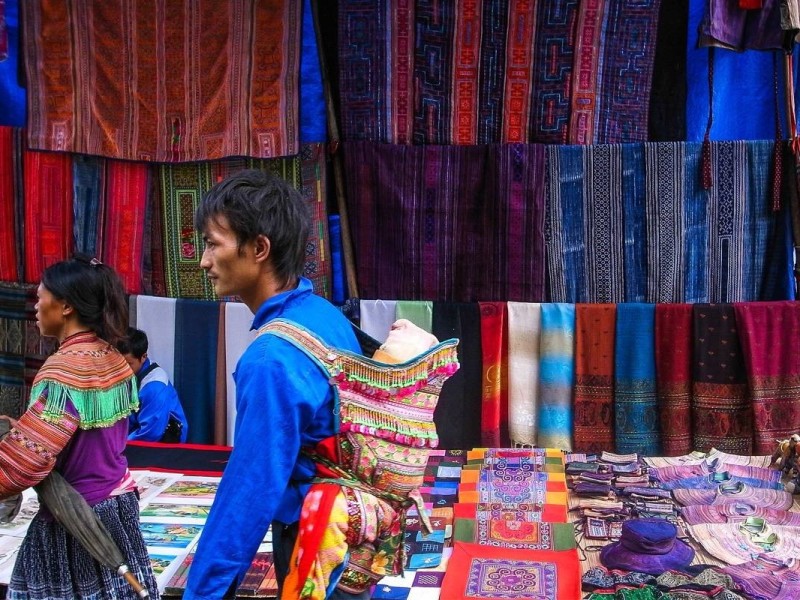
Why Cao Son Market Captivates Travelers
Cao Son Market captures the imagination of every traveler who makes the journey into these highlands. Why visit Cao Son Market? Its appeal is grounded in a rare authenticity and a sense of discovery that is hard to find elsewhere in Vietnam. The market’s highlights draw you in: vibrant ethnic culture, colorful traditions, and opportunities for true cultural immersion. This is a destination that feels untouched, away from the well-trodden tourist trail, making it one of the most captivating travel destinations Vietnam has to offer.
Here, every moment is painted with genuine encounters and dazzling visual beauty. You don’t just witness local life—you become a part of it. Whether you’re tasting fresh highland produce, watching the bartering dance, or simply taking in the colorful chaos, Cao Son Market will challenge your senses and change the way you see rural Vietnam.
Curious to experience the market’s irresistible draw? Let these next scenes help you imagine the energy and spirit waiting in the heart of the highlands.
The Market’s Vibrant Atmosphere and Sights
Step into Cao Son Market and you’re surrounded by a sensory celebration. The Cao Son Market atmosphere hums with the sound of animated conversation, laughter, and the bartering rhythm that drives every stall. Sights at Cao Son overwhelm: vibrant embroidered costumes, baskets overflowing with wild herbs, and sunlit bundles of fresh produce set against a backdrop of misty mountains. The air is alive with the aroma of sizzling local dishes, smoky grilled meats, and sweet sticky rice.
- Bustling Energy: Crowds ebb and flow, giving the market a natural rhythm that pulses with anticipation and joy.
- Soundscape of the Highlands: Listen for the calls of vendors, cheerful haggling, and the melodies of regional dialects woven together.
- Aromas and Flavors: Local food stalls offer everything from savory noodles to homemade corn wine, filling the air with tempting scents.
- Colorful Visuals: Every corner bursts with color—red, indigo, and green fabrics, silver jewelry, and handwoven baskets.
- Highland Backdrop: The scenery alone—mountains rising beyond the stalls—reminds you you’re in a place shaped by nature as much as culture.
The energy and sights at Cao Son Market create a world that’s immersive and unforgettable. This is where the best of vibrant markets Vietnam comes alive for all your senses.
If you crave a travel experience that stirs every sense, set your sights on Cao Son Market—and be ready to be swept away.
First-Hand Stories and Original Visitor Impressions
Cao Son Market has left an indelible impression on countless visitors, and their stories speak to its magic. Reading Cao Son Market reviews and traveler experiences Cao Son, you’ll find certain themes again and again: surprise, delight, and a sense of wonder at discovering a corner of Vietnam where traditions are still lived, not just displayed.
- “I’ve never felt so welcome. Every smile felt genuine, and sharing a meal with a Tay family was the highlight of my trip.” – Traveler from France
- “Unlike bigger, tourist-filled markets, Cao Son Market felt like a secret worth keeping. I was the only foreigner in sight.” – Solo backpacker, Australia
- “Bartering for a hand-embroidered scarf turned into a lesson in Hmong culture I’ll never forget.” – Writer, USA
- “The color, the energy, the food—every sense was on overload. This is real, living culture, not a show for tourists.” – Photographer, Singapore
These visitor impressions Vietnam validate what makes this market truly special. The market delivers authenticity, human connection, and moments that linger long after the journey ends.
Ready to write your own chapter in the story of Cao Son Market? Let the testimonials guide your expectations—and inspire your next adventure.
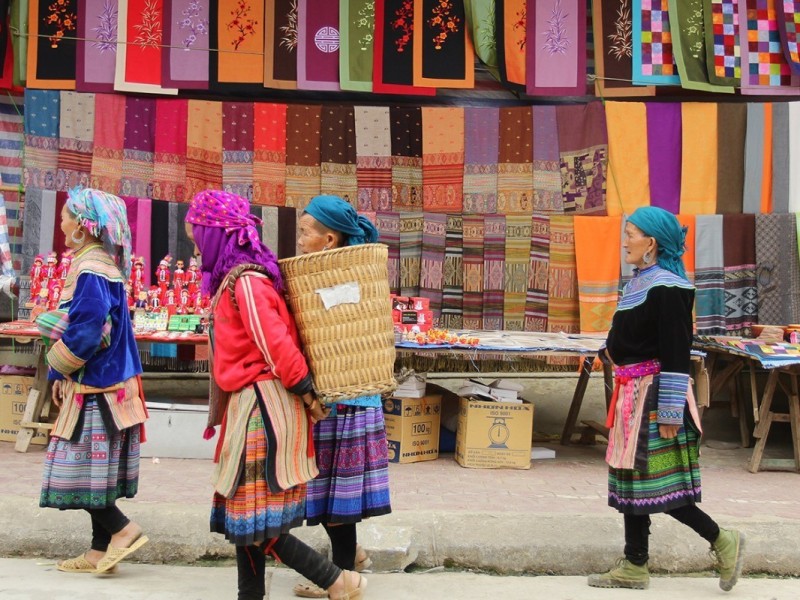
Planning Your Trip to Cao Son Market
Careful trip planning turns a remote adventure into a seamless experience at Cao Son Market. This section is your step-by-step Cao Son travel guide, with all the Cao Son logistics and practical tips you need to explore one of Northern Vietnam’s most authentic highland markets. Whether you’re mapping out your route, checking the best season to go, or figuring out how to fit the market into a broader trip, you’ll find the information here to plan with confidence. Begin your journey with the right details and unlock an easier, richer visit to Cao Son Market.
To make your own trip as smooth as possible, use these practical tips to start building your personalized travel plan to Cao Son Market.
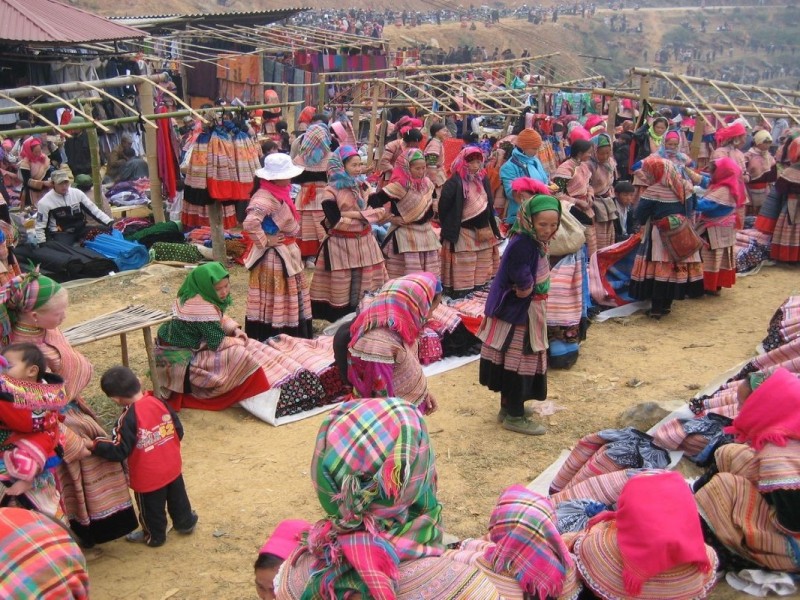
Where Exactly is Cao Son Market?
Cao Son Market is located deep in the highlands of Lao Cai Province, Northern Vietnam. The market sits in a scenic valley, surrounded by green mountains, winding rivers, and endless terraces of rice fields. Its remote location gives it a feeling of discovery, far from the crowds you might find in other highland destinations. This unique setting not only defines the market’s atmosphere but also rewards travelers willing to seek it out. If you’re searching “Cao Son Market location” or wondering “where is Cao Son Market,” you’ll find it nestled at the end of quiet mountain roads, near the border with China—about as off-the-beaten-path as Northern Vietnam gets.
Understanding the exact placement of the market makes it easier to plan how you’ll include this stop in your Northern Vietnam journey.
Ready to map your route? Find the market’s location below and visualize the adventure that awaits.
Address, Geographic Setting, and Area Map
The exact address of Cao Son Market is Cao Son Commune, Muong Khuong District, Lao Cai Province, Vietnam. The market is surrounded by wild, forested hills, winding rivers, and terraced rice paddies that shift colors with the seasons. It’s a place where the beauty of rural Northern Vietnam is on full display. To help you plan, check this Google Maps link to Cao Son Market, which makes navigation from major hubs easier.
- Full Address: Cao Son Commune, Muong Khuong District, Lao Cai Province, Vietnam
- Setting: Remote, mountainous, with river valleys and terraced fields all around
- Access: Reachable by car, tour, or adventurous local bus; best to plan ahead for transport
- Map Reference: Use the above Google Maps link for exact location and directions
Knowing the Cao Son Market address and landscape helps travelers avoid confusion and appreciate the effort required for this journey.
Before you go, bookmark the map and address to ensure you can find your way without stress.
Proximity to Sapa, Bac Ha, and Muong Khuong
Getting to Cao Son Market is part of the adventure. Here’s how far it is from the main travel hubs in the region and how you can fit it into your itinerary:
- Sapa to Cao Son Market: Around 110 km, usually 3.5–4 hours by car (longer if traveling by bus or via smaller roads)
- Bac Ha to Cao Son Market: About 55 km, 2–2.5 hours by car; this is a scenic, hilly drive and can be combined with other local markets
- Muong Khuong to Cao Son Market: Roughly 30 km, about 1 hour; Muong Khuong is the closest major town and makes a convenient base
It’s possible to visit Cao Son Market as a long day trip from Sapa or Bac Ha, but many travelers choose to stay overnight in a local guesthouse or homestay for a deeper experience. These distances mean you can combine several market visits or local attractions in one trip, tailoring your Northern Vietnam adventure to your interests and pace.
Understanding the travel times helps you plan whether a day trip or overnight stay is best, and how to link your journey through the region’s most fascinating markets.
Start building your itinerary now and unlock more of Northern Vietnam’s hidden gems.
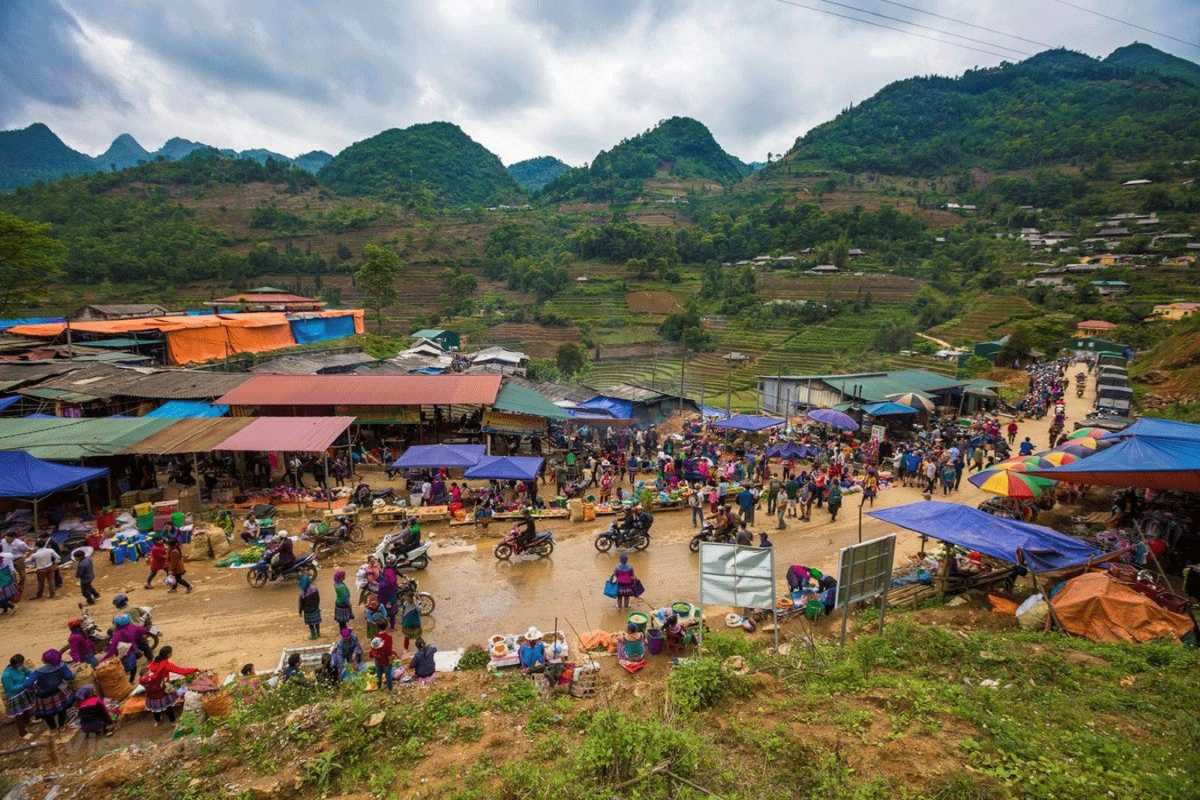
How to Get There: Routes and Transportation
Reaching Cao Son Market is a rewarding journey that calls for thoughtful planning. If you’re wondering how to get to Cao Son Market, rest assured you have several Cao Son travel options to match your style and budget. Whether you value comfort, adventure, or cost-savings, there’s a route for you. Understanding your transport to Cao Son will help make the trip part of the adventure, not a hassle. Below, you’ll find all the details you need for a smooth start to your highland experience.
Choose the route that suits your travel pace and discover why the journey to Cao Son Market is as memorable as the destination itself.
Private Car, Local Tours, and Public Transport Options
When planning your journey to Cao Son Market, you’ll want to weigh each travel method. Here’s what you need to know about private cars, local tours, and public transport options for getting to the highlands from towns in Lao Cai Province.
- Private Car or Taxi: The most comfortable and flexible way to reach Cao Son Market. Expect to pay from 1,200,000 to 1,800,000 VND one-way from Sapa or Bac Ha (price may vary by season or vehicle type). The trip takes 2–4 hours depending on your starting point. Recommended for small groups or those with tight schedules.
- Local Tours: Several operators offer organized Cao Son Market tours departing from Lao Cai, Sapa, or Bac Ha. These tours typically include transport, a guide, and sometimes lunch. Costs range from $35–$65 USD per person. Local tours are a good choice for first-timers and anyone seeking cultural insights along the way. To book a reliable tour, consider reaching out to Asia Travel Links for curated options.
- Public Bus: A budget-friendly but less predictable option. Buses to Muong Khuong (the nearest town) depart daily from Lao Cai City and take 2–3 hours. From there, you may need to hire a motorbike taxi or small van for the final stretch. Buses can be infrequent, so check schedules and allow extra time. Fares are around 80,000–120,000 VND each way.
- Self-Drive or Motorbike: For the adventurous, renting a car or motorbike offers maximum freedom, but be aware of winding roads, remote stretches, and variable road conditions, especially in the rainy season.
Each option offers a unique way to experience the journey. Private cars provide ease and speed, tours offer guidance and comfort, while public buses and motorbikes invite a sense of adventure. Choose what fits your travel style and timeframe.
To lock in your transport early, reach out to local providers or email us at Asia Travel Links for updated schedules and trustworthy tour bookings.
Robert's Road Trip: Navigating to Cao Son Market
Let's be honest, getting to some of Vietnam's most authentic spots isn't always about smooth highways and luxury coaches. My journey to Cao Son Market was a classic example of that. It wasn't just a drive; it was a full-blown Cao Son road trip, an adventure that truly made me feel like I earned the incredible cultural immersion waiting at the end. It challenged me, but in the best way possible, showcasing the true spirit of navigating Northern Vietnam off the beaten path.
My alarm blared long before dawn in Sapa, a chilly start that promised crisp mountain air. I had opted for a private car with a local driver, Mr. Thanh, rather than a tour bus. I wanted the flexibility to stop, to breathe, to truly take in the landscape. The initial stretch out of Sapa was familiar, past terraced rice paddies still shrouded in mist, the occasional silhouette of a Hmong woman walking purposefully by the roadside.
But soon, the road changed. We veered off the main artery, and the smooth asphalt gave way to a narrower, winding path. The further we went, the more dramatic the scenery became. Towering limestone karsts shot up from the earth, draped in impossibly green foliage. The road clung precariously to the mountainside, offering dizzying views of valleys far below, dotted with tiny, almost invisible hamlets. This was no gentle countryside drive; this was the rugged, untamed heart of Lao Cai Province. There were stretches where the road became a patchwork of gravel and older tarmac, requiring Mr. Thanh's expert handling. One particular section, after a surprising drizzle that felt out of place for the season, turned a little slick. He navigated it with calm precision, a testament to local expertise. These were the minor travel challenges Vietnam can throw at you, but they're part of the adventure.
We passed through villages so remote I wondered how they even accessed supplies. Children, shy but curious, waved from their doorways. I spotted water buffalo cooling off in muddy puddles, their broad backs steaming in the morning chill. The scent of woodsmoke and damp earth filled the air, a constant reminder that I was deep in the highlands. There were no tourist shops or fancy rest stops, just the raw, unvarnished beauty of rural life. It was a journey of gradual discovery, each bend in the road revealing another breathtaking vista or a glimpse into an unchanged way of life. The further we drove, the more my anticipation built – this market had to be special if it was this tucked away.
Having experienced this journey firsthand, I can tell you that the drive to Cao Son is not just a means to an end; it's an integral part of the adventure. It helps you appreciate the remoteness of the market and the sheer effort the local ethnic communities put into attending it. It also underscores why a reliable, local driver is invaluable. They know the terrain, the seasonal nuances (like unexpected rain making roads slick), and how to navigate with confidence. Don't underestimate the road; embrace it as part of the overall, enriching experience.
Actionable Practical Takeaways:
- Hire a Local Driver: Unless you're an experienced motorbike rider familiar with challenging mountain roads, a local driver is highly recommended. Their expertise on these winding, often unpaved sections is invaluable. Negotiate the price for the full round trip beforehand.
- Allocate Ample Time: The drive from Sapa can take around 2.5 to 3.5 hours one-way, depending on road conditions and stops. Don't rush it; build in time for scenic photo stops.
- Pack Motion Sickness Medication (If Needed): The roads are winding, with plenty of twists and turns. If you're prone to motion sickness, come prepared.
- Go Early: Beyond the market itself, an early start means you experience the quiet beauty of the highlands before the heat sets in, and you’ll arrive at the market as it truly awakens.
- Battery Pack & Cash: Mobile signal can be intermittent. A power bank for your phone is a good idea. Ensure you have plenty of Vietnamese Dong (VND) in small denominations; ATMs are non-existent once you're on the approach to Cao Son.
Arriving at Cao Son Market after that epic drive felt like a triumph. The journey had stripped away any lingering urban stresses, replacing them with a sense of adventure and a profound connection to the land. It solidified the feeling of truly "earning" this unique destination, making the vibrant market even more rewarding.
Recommendation: If the idea of a scenic, slightly challenging drive through breathtaking mountain landscapes appeals to you, then undertaking the road trip to Cao Son Market is an absolute must. It's an adventure that primes you perfectly for the authentic cultural tapestry awaiting you, and it will undoubtedly be a memorable highlight of your Northern Vietnam travels.
What to Know About Road Conditions and Seasonal Challenges
Before setting out for Cao Son Market, understanding the actual Cao Son Market road conditions and the seasonal factors that may affect your journey is crucial. The remote nature of the route, combined with Northern Vietnam’s dramatic weather, makes advance planning essential for a safe and smooth trip.
- Mixed Road Surfaces: Expect a combination of paved and unpaved roads leading to Cao Son Market. Certain sections, especially the last stretch, may be single-lane or gravel, requiring slower speeds and careful navigation.
- Rainy Season Hazards (May–September): Landslides and slippery surfaces are common during the rainy season. Always check local weather and avoid travel during or right after heavy rain if possible. These months require extra caution and flexible timing.
- Fog and Reduced Visibility (December–February): In winter, dense fog can settle over highland roads, reducing visibility and increasing the risk of delays or minor accidents. Drive slowly and use headlights; if you’re not experienced with mountain driving, hire a local driver.
- Recommended Vehicles: High-clearance vehicles, such as 4WDs, are best for tackling uneven terrain and unexpected obstacles. Smaller cars or motorbikes may struggle on muddy or rough patches, especially during or after rain.
- Hire a Local Driver: An experienced local driver knows how to handle mountain conditions, navigate detours, and respond quickly to weather changes. This is the safest option, especially for first-time visitors.
Knowing what to expect for road and weather conditions will help you travel to Cao Son Market with greater confidence and peace of mind. Plan ahead, choose your timing carefully, and consider hiring a driver for the safest experience.
For updated local advice, route recommendations, or to book a private transfer, email us at Asia Travel Links.
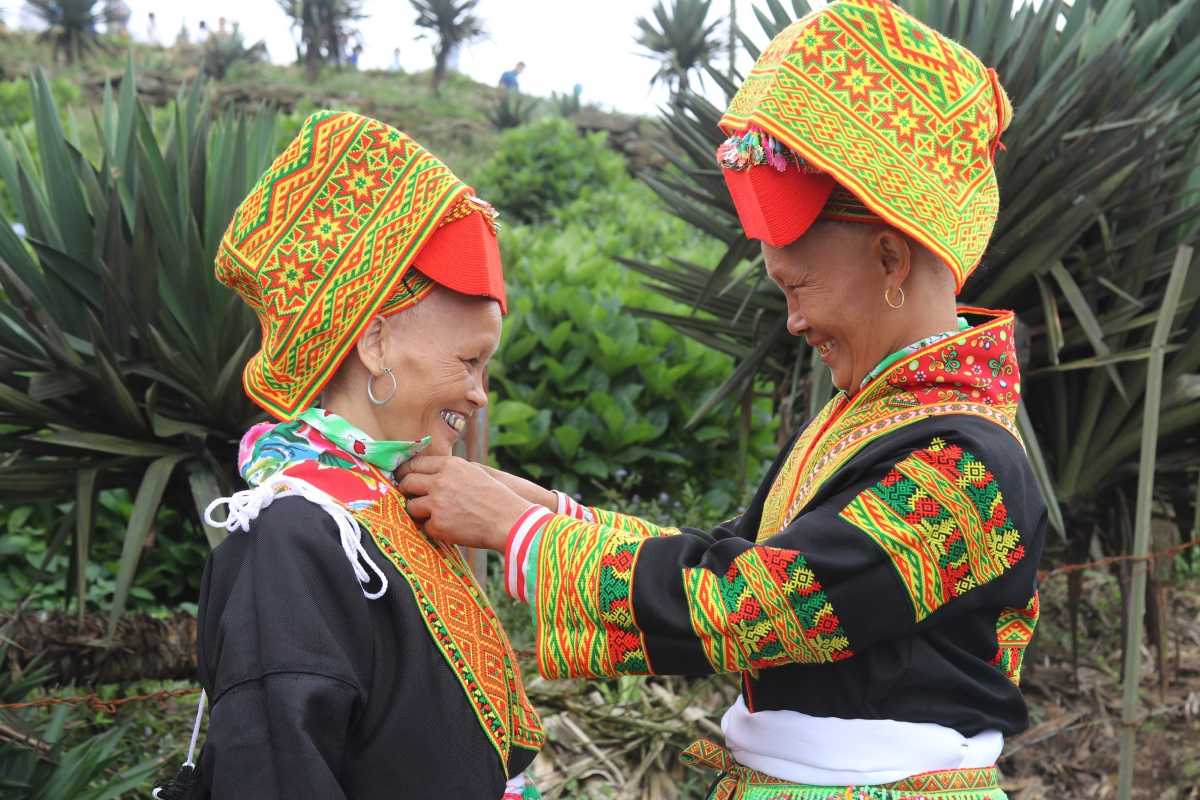
When to Visit for the Best Experience
Timing your trip to Cao Son Market can make all the difference in your experience. The best time to visit Cao Son Market is when the market is in full swing, the weather is pleasant, and the highlands are bursting with color and life. The market typically operates on one main day each week, so planning ahead is essential. Consider both the Cao Son Market weather and the annual agricultural calendar for the most rewarding adventure. Wondering when to go Cao Son? Read on for season-by-season advice to ensure you catch the market at its liveliest.
Visiting at the right time ensures your experience is as vivid, immersive, and hassle-free as possible. For the latest local insights, reach out to us at Asia Travel Links for tailored trip planning.
Market Days, Seasonal Highlights, and Weather Insights
Knowing the Cao Son Market schedule is vital for any visitor. The main market day is Wednesday, when vendors and local families from surrounding villages gather for commerce and connection. Seasonal changes also bring unique highlights and challenges to your visit.
- Market Day: Wednesday, from early morning until early afternoon, is the heart of market activity.
- Harvest Season (September–October): The market is especially lively, with abundant fresh produce, bustling crowds, and festival-like energy.
- Dry Season (October–April): Expect cooler temperatures (average 15–22°C), clear skies, and scenic mountain views. Markets are more comfortable, but mornings can be brisk.
- Rainy Season (May–September): The landscape is lush and green, but expect occasional downpours and muddy paths. Attendance is steady, but bring rain gear and prepare for slippery terrain.
- Winter (December–February): Quieter atmosphere, crisp mornings (as cool as 10°C), and fewer crowds, offering a peaceful but authentic vibe.
Each season gives a different lens on Cao Son Market, from bustling festival energy to quiet, intimate gatherings. Check local forecasts before you travel, and remember: packing layers and a rain jacket is always wise in Northern Vietnam.
For help picking the perfect market day and season for your journey, email us at Asia Travel Links.
Festive Events and Special Occasions at the Market
Visiting Cao Son Market during local festivals or special events can elevate your trip from memorable to unforgettable. Annual festivals and unique market-day gatherings often feature traditional music, vibrant costumes, and rare cultural rituals. Check local event calendars or tour operator listings to catch one of these special occasions during your visit.
- Lunar New Year (Tet): Celebrated with colorful processions, festive food, and traditional games.
- Harvest Festival: Usually held in late September or October, bringing music, dance, and special market activities.
- Ethnic Group Celebrations: Throughout the year, different communities hold their own events, such as weddings or clan gatherings, which sometimes align with market days.
Aligning your trip with a festival or Lao Cai special event gives you deeper insight into the region’s traditions and makes for vibrant travel memories. For updated information on upcoming celebrations, email us at Asia Travel Links or call our local team in Vietnam.
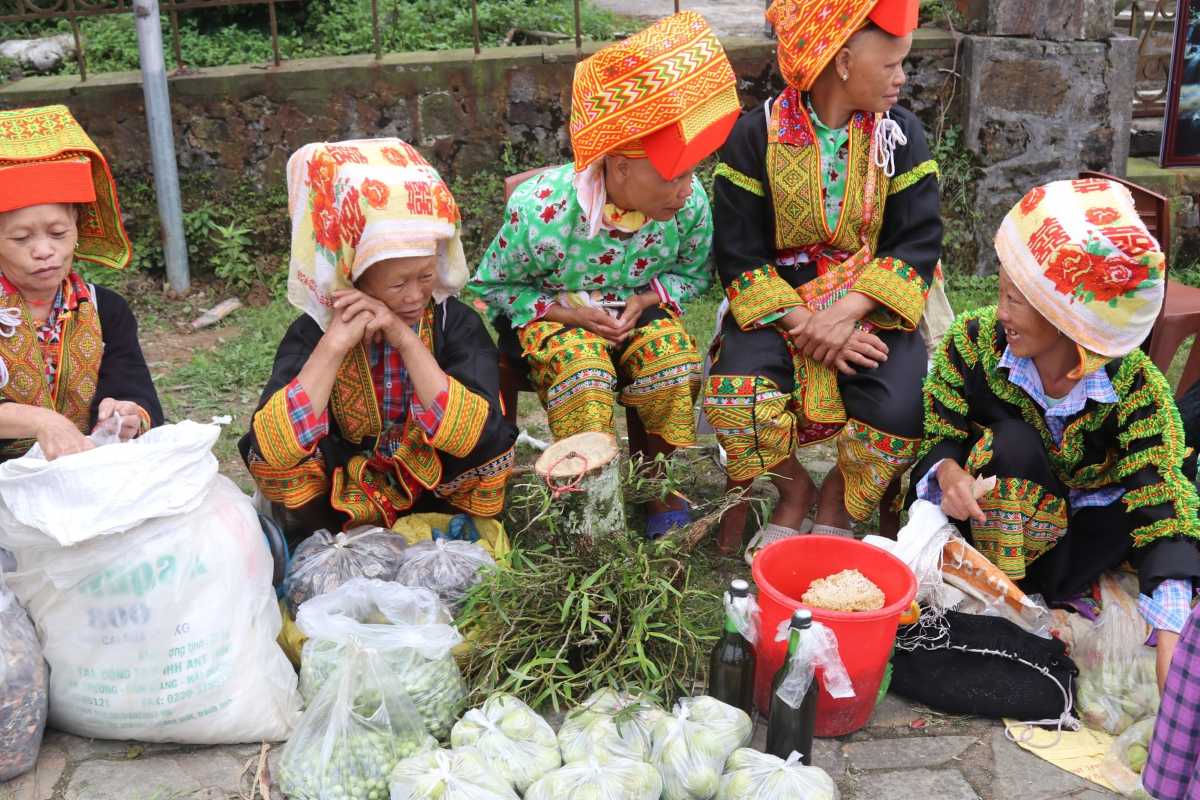
What to See and Do at Cao Son Market
Set foot in Cao Son Market and you enter a world alive with highland color, sound, and tradition. This is not just a place to shop but a true immersion into rural culture—one where every sense is awakened. For travelers searching for the most authentic Cao Son Market activities, you’ll discover a vibrant itinerary of sights, tastes, and connections. There are so many things to do at Cao Son Market that every visit becomes a personal journey: meet local artisans, sample the region’s best dishes, and soak in a day shaped by the rhythm of market life. Let this guide help you plan the highlights of your visit and ensure every moment counts.
For those who want help tailoring their market adventure, Asia Travel Links can provide up-to-date guidance or help arrange special experiences.
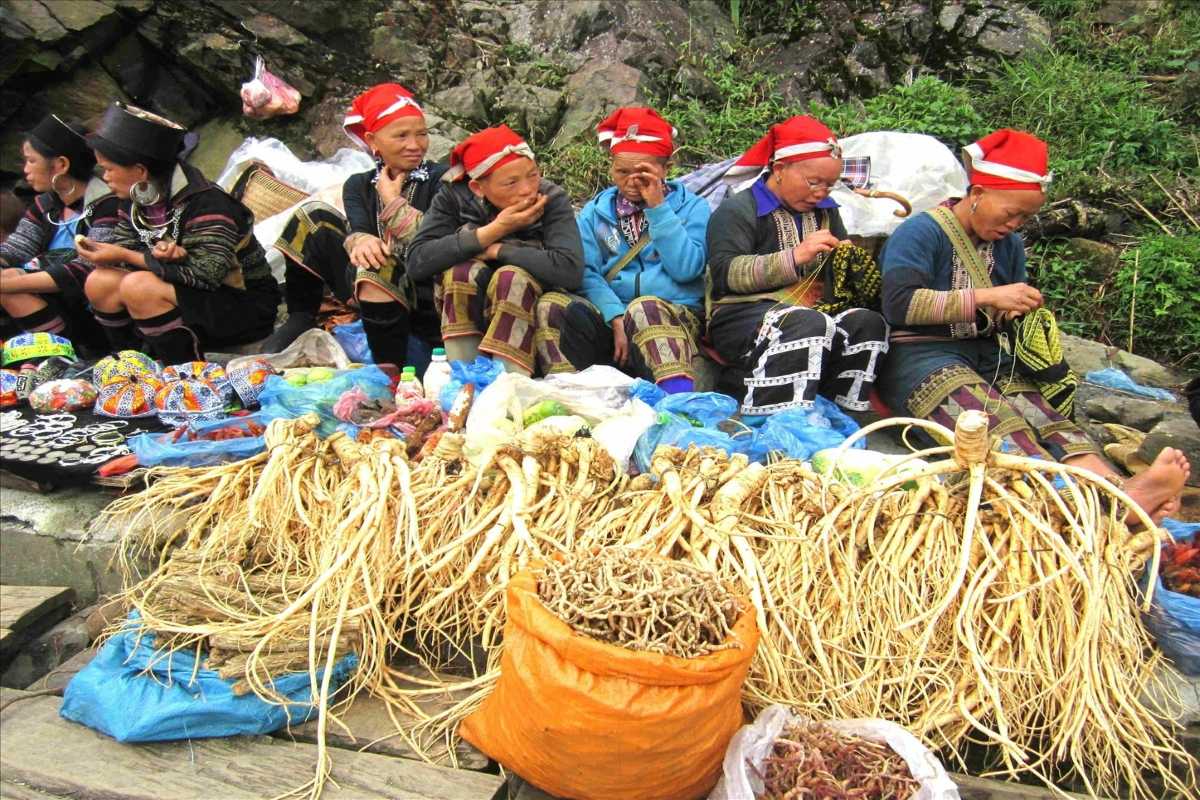
Immersing Yourself in Market Activities
A day at Cao Son Market unfolds in vivid, memorable phases, each offering its own charm. If you want to experience the best the market has to offer, timing and openness are key. Many travelers plan their arrival for the first light, drawn by the tranquil beginnings of the market day Cao Son. As the sun rises, the atmosphere grows from gentle anticipation to lively celebration, with a steady stream of locals and visitors bringing the square to life. Your best activities will flow with the day’s natural rhythm: savoring the early calm, mingling as the crowds grow, and taking in everything from trading rituals to cultural performances. Follow this Cao Son visitor guide to make the most of each phase, and let your curiosity lead you from stall to stall.
Start your market day early, move with the crowd, and keep an open mind—this is where the heart of Cao Son truly reveals itself.
Morning Rituals and the Bustling Early Hours
To experience Cao Son Market at its most genuine, arrive just after dawn. The first arrivals are often ethnic villagers—Hmong, Phu La, Dao, Tay—making their way in from remote mountain paths, carrying woven baskets or guiding livestock. Stalls pop up beneath blue tarps, and the air fills with the low hum of quiet greetings and soft laughter. This is the best time to arrive Cao Son Market: between 6:00 and 7:00 AM, before the peak crowd and with the soft light of morning lending a magical glow to the scene.
- Early Arrival: Witness the set-up and quiet anticipation before the market bursts into full swing.
- Ethnic Processions: See groups in traditional dress, bringing their produce, crafts, and stories to share.
- First Bargains: Vendors are more open to conversation and negotiation before the rush begins.
- Freshest Food: Try breakfast dishes, warm sticky rice, or local noodle soup as they’re served fresh.
- Photographic Light: Capture the best photos in the golden morning, before crowds and midday haze set in.
Starting your day early unlocks the purest energy and charm of Cao Son Market, while also guaranteeing space to explore at your own pace. If you’re looking to plan the perfect early arrival, email us at Asia Travel Links for tailored tips and support.
Sarah's Sunrise Stroll: Experiencing Cao Son's Awakening
The pre-dawn chill in the Lao Cai highlands was invigorating, and a profound sense of anticipation buzzed within me. I’d heard tales of Cao Son Market, a weekly gathering where time seemed to slow, but nothing could have prepared me for the magic of its awakening. It wasn't just an early start; it was being granted a quiet, privileged view into an authentic market awakening, a timeless ritual that felt deeply spiritual.
My journey to the market began while the stars still glittered fiercely in the inky sky. As our vehicle approached, the first hint of life wasn't a roar, but a whisper. I could just discern figures, tiny in the vastness of the landscape, walking steadily towards the market grounds. These were the ethnic minority people – Hmong, Dao, Phu La – who had walked for hours from remote villages, their traditional clothes a stark contrast to the fading night. It was a pilgrimage, not just a trip to the shops.
Stepping out, the air was sharp and clean, carrying only the faintest scent of damp earth and distant woodsmoke. As the sky softened from inky black to bruised purple, then to a soft, ethereal grey, the market slowly materialized. The initial silence began to crackle. The first sounds were subtle: the soft thud of a basket being set down, the distant bleating of a goat, a quiet cough, then the low murmur of voices as vendors began to arrange their wares. This wasn't the clamor of a bustling city; it was the gentle hum of life emerging, one interaction at a time. This was the Cao Son morning market in its purest form.
Then came the aromas. As small, makeshift stoves were lit, the fragrant scent of breakfast cooking began to waft through the crisp air. The rich, savory notes of pho broth, slow-simmering overnight, mingled with the earthy sweetness of roasted corn and the pungent tang of fermented vegetables. It was a primal, comforting smell, signaling the start of a new day and the promise of sustenance. I watched a woman carefully fan the coals under a pot, her face illuminated by the flickering flame, and felt an overwhelming sense of wonder at being privy to this simple, beautiful moment.
As the sun finally kissed the highest peaks, painting them in hues of gold and rose, the market was fully alive. Women in their kaleidoscopic traditional dresses moved with purpose and grace, their silver jewelry catching the first rays of light. Men huddled around pens of livestock, their voices rising in the first whispers of negotiations, not loud or aggressive, but calm and considered. Children, wide-eyed and curious, chased chickens underfoot. The feeling was profound: I wasn't just witnessing a market; I was witnessing a community's heart beating at sunrise Cao Son, an ancient rhythm unfolding before me. It was a privilege to experience such raw, uncommercialized life, a true connection to the soul of the highlands.
My early arrival at Cao Son solidified my understanding that the true essence of this market is found in its quiet beginnings. Most tourist itineraries arrive later, missing the meditative beauty of its unhurried awakening. This initial period offers unparalleled opportunities for photography (respectfully, of course) and observation, allowing you to appreciate the deliberate pace and genuine interactions before the main hubbub. It's during these early hours that you truly feel like an integrated part of the scene, rather than a mere spectator.
Actionable Practical Takeaways:
- Arrive Before Dawn: Seriously, set that alarm! Aim to be there by 6:00 AM to 6:30 AM to witness the full spectrum of the market's awakening. This is when it's most authentic and less crowded.
- Dress Warmly in Layers: The highlands are significantly cooler in the early morning, even in warmer seasons. Layers are key, as it will warm up quickly once the sun is fully out.
- Bring a Headlamp/Flashlight: The market area might still be dimly lit before sunrise, which can be helpful for navigating and observing details.
- Respect Quiet Moments: During the initial setup, people are focused. Observe quietly, and if taking photos, always ask permission, even with a gesture and a smile.
- Look for Breakfast Stalls: The early morning is the perfect time to find freshly prepared, steaming local breakfast dishes like sticky rice or noodle soups. They’re often the first to get going.
My sunrise Cao Son stroll wasn't merely sightseeing; it was a deeply moving experience that connected me to the enduring spirit of the Vietnamese highlands. It’s an immersion into a rhythm of life that has persisted for generations, and a true testament to the unique magic of the Cao Son morning market.
Recommendation: For travelers seeking a truly profound and unforgettable cultural experience, I wholeheartedly recommend experiencing the Cao Son Market at dawn. It’s a moment of quiet anticipation and genuine human connection that will stay with you, far beyond the hustle and bustle of more conventional market visits. Don't just go to the market; witness its soul's awakening.
Bartering, Shopping, and Sampling Unique Local Products
Navigating the stalls of Cao Son Market is both a cultural adventure and a practical art. If you’re wondering what to buy at Cao Son Market, start by watching the rhythms of local bartering—a polite smile, friendly gestures, and a sense of humor go a long way. Bargaining is expected, but always keep it respectful; begin with a gentle offer below the asking price and work your way up, knowing that mutual respect leads to better deals and more enjoyable exchanges. Use these bartering tips Vietnam: always thank the seller, accept the final price with a smile, and never push too hard, especially for handmade or unique goods.
- Livestock and Poultry: Buffalo, pigs, chickens, and ducks are traded in the open areas, echoing the region’s agricultural traditions.
- Seasonal Fruits and Vegetables: Plums, wild peaches, bamboo shoots, forest mushrooms, and mountain herbs are often picked that very morning—taste the highlands in every bite.
- Traditional Crafts: Embroidered textiles, handwoven baskets, and dyed hemp goods showcase the skills of local ethnic groups.
- Highland Clothing and Accessories: Scarves, sashes, and silver jewelry, many pieces unique to each community, make for meaningful souvenirs.
- Local Food and Snacks: Sticky rice cakes, grilled corn, or wild honey offer the flavors of the market in a bite.
Shopping at Cao Son Market is a chance to support local families and bring home something truly special. Take your time, ask questions (even with gestures), and let curiosity lead you. For deeper guidance on market etiquette and discovering authentic local products Cao Son, reach out to Asia Travel Links for expert tips and personalized support.
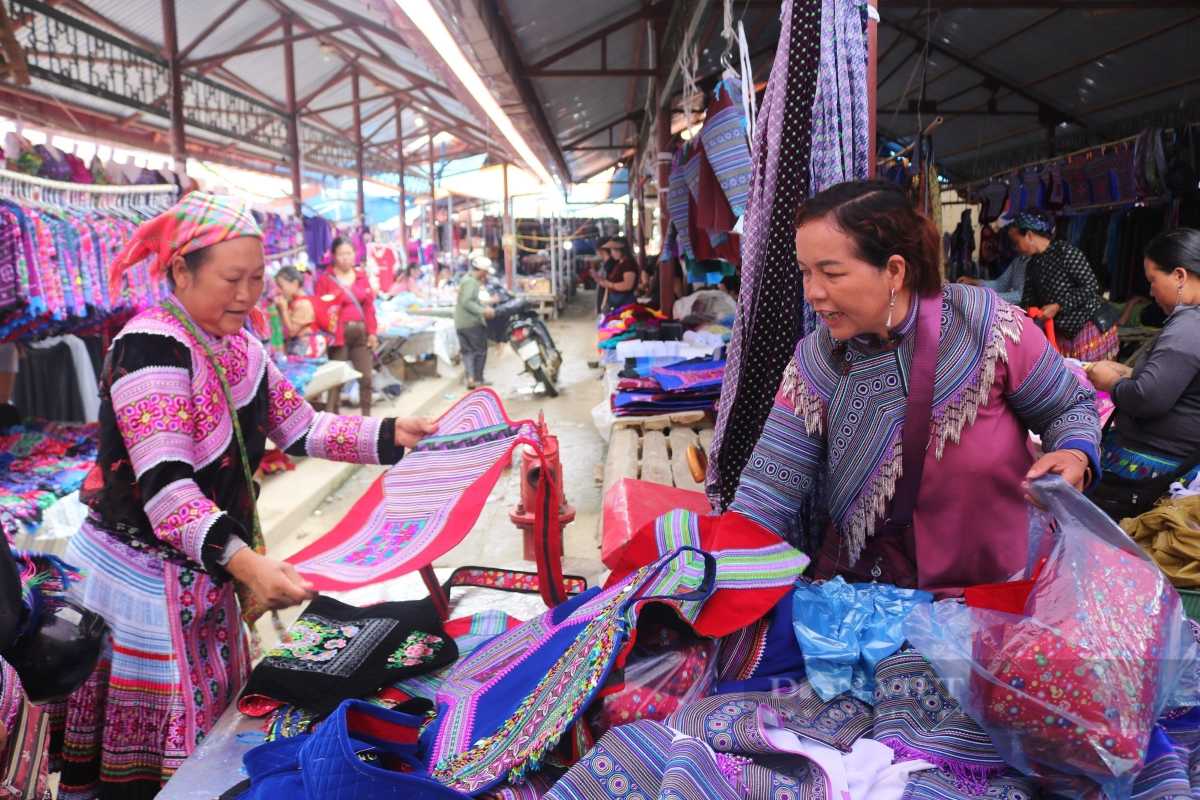
Savoring the Flavors of the Highlands
A visit to Cao Son Market is never complete without sampling the incredible variety of food that brings the highlands to life. If you’re craving an authentic experience, start your culinary journey by exploring the countless stalls and smoky food corners. The food at Cao Son Market is rustic, bold, and shaped by the mountain climate, with every bite reflecting the ingenuity and hospitality of the region’s ethnic groups. Adventurous eaters and cautious foodies alike will find something to love, with many dishes prepared fresh each market day—look for the busiest stalls and follow your nose to the best spots for a true taste of the Cao Son Market cuisine.
Get ready to savor regional specialties and discover a side of Vietnam rarely found in city restaurants. For expert suggestions or help planning a foodie route, Asia Travel Links is happy to advise—just ask us how to enjoy the most delicious highland delicacies.
Must-Try Dishes and Local Delicacies
No culinary guide to Cao Son Market is complete without these signature dishes and drinks, each one packed with local flavor and tradition:
- Thang Co: This iconic horse meat hotpot, known as Thang Co Cao Son, simmers with aromatic mountain herbs, horsemeat, and offal. Earthy, robust, and not for the faint-hearted, it’s a dish that locals enjoy together, especially on chilly mornings.
- Xôi ngũ sắc (Five-color sticky rice): Steamed glutinous rice dyed with natural plants to create vibrant colors, this specialty is soft, slightly sweet, and visually stunning—served with sesame, salt, or sometimes shredded coconut.
- Rượu ngô (Corn wine): Locally brewed and often homemade, this powerful spirit is smooth, slightly sweet, and a central part of highland hospitality. Toast a glass with vendors and fellow visitors.
- Pho and noodle soups: Unlike the southern style, these bowls are rich with bone broth, local vegetables, and sometimes a kick of wild herbs or foraged mushrooms—perfect for breakfast.
- Grilled skewers and market snacks: From sticky rice cakes to grilled meats and corn, the aroma and char are irresistible—look for stalls surrounded by hungry regulars.
Sampling these Vietnamese highland dishes is an adventure in itself. Be open, try new flavors, and always check for popular stalls with fast turnover for the freshest and safest options. Let your taste buds lead the way and don’t hesitate to ask locals for their favorites. If you need help finding the best local food in Lao Cai, let Asia Travel Links know—we love sharing our culinary secrets with fellow travelers.
Ben's Culinary Quest: Tasting Cao Son's Hidden Gems
For me, traveling is as much about tasting a place as it is about seeing it. So, when I arrived at Cao Son Market, my internal compass immediately pointed towards the bustling, fragrant food stalls. My mission: embark on a full-blown culinary adventure Cao Son style, to uncover the hidden gems simmering in pots and sizzling on makeshift grills. It was going to be a deep dive into local street food Vietnam at its most authentic.
The market air was a symphony of aromas, each competing for attention. The sweet, earthy scent of roasted corn mingled with the tangy, fermented notes of something deliciously unknown. Overriding it all was the rich, almost primal aroma of Thang Co, a local hotpot, simmering in giant cauldrons. My stomach rumbled in eager anticipation.
My first stop was a stall where women, their faces flushed from the steam, were ladling out bowls of what looked like a rich, dark stew. This, I learned, was Thang Co – a traditional Hmong dish, often made with horse meat and a medley of herbs and spices. Hesitation flickered for a second, but my adventurous spirit, and the sheer number of locals slurping it down with relish, won out. I took a deep breath and dug in. The first taste was a revelation: intensely savory, with complex herbal notes I couldn't quite place, and a satisfying, warming heat. The texture was tender, nothing like what I'd expected. It was a bold, unapologetic flavor, and instantly, I understood its place as a highland staple. This wasn't just food; it was sustenance, history, and community in a bowl.
Next, my eyes were drawn to a vibrant display of sticky rice. Not just plain white, but a rainbow of colors – purple from local leaves, green from pandan, yellow from turmeric. Each grain was perfectly chewy, subtly sweet, and incredibly satisfying. I tried a small portion of the purple variety, wrapped in a banana leaf, and the slight stickiness on my fingers felt like a badge of honor. It was simple, yet profoundly delicious.
As I wandered, I spotted a woman fanning a charcoal grill, the smoke carrying the irresistible scent of sizzling meat. It turned out to be skewers of grilled pork, marinated in what tasted like lemongrass and chili. The crackle of the fat, the tender bite of the meat, the smoky char – it was pure street food perfection. I pointed, smiled, and she handed me a skewer wrapped in a fresh leaf. No words exchanged, just a shared moment of culinary satisfaction. This was the essence of a Cao Son food tour – unexpected discoveries and genuine, unspoken connections.
My culinary quest revealed that Cao Son's food scene is less about refined dining and more about hearty, rustic, and incredibly flavorful sustenance, prepared with age-old techniques. Don't expect menus; point to what looks good and embrace the adventure. The surprising cleanliness of the food stalls, despite their makeshift appearance, was also noteworthy – a testament to local care. The best way to engage is to simply sit down, share a smile, and let the food do the talking.
Actionable Practical Takeaways:
- Be Adventurous: Many dishes might look unfamiliar, but they are often incredibly flavorful and represent centuries of local culinary tradition. Thang Co is a must-try for the brave!
- Look for Busy Stalls: A crowd of locals around a food stall is usually a good indicator of fresh, delicious, and hygienic food.
- Carry Wet Wipes and Hand Sanitizer: While hygiene is generally good, these are invaluable for cleaning hands before and after eating.
- Embrace Communal Eating: You’ll likely be sitting on low stools at communal tables. This is part of the authentic experience and a great way to observe local life.
- Try the Corn Wine (Rượu Ngô): Small cups of locally brewed corn wine are often available. It's potent but a unique taste of the highlands.
- Sample the Sticky Rice: The vibrant, naturally colored sticky rice varieties are not only beautiful but also a delicious and portable snack.
My culinary adventure Cao Son experience wasn't just about satisfying hunger; it was about connecting with the heart of the market through its flavors, its aromas, and the warm smiles of the people who prepared these delicious, authentic dishes. It was a true taste of Vietnam's hidden highland gems.
Recommendation: If you are a food lover seeking an authentic and adventurous gastronomic journey, then a Cao Son food tour is an absolute essential. Come hungry, be open-minded, and let your taste buds lead you to some of the most genuine and memorable local street food Vietnam has to offer.
Where to Eat and Drink Around Cao Son Market
Eating well at Cao Son Market is all about choosing wisely and soaking up the vibrant local atmosphere. Here’s how to find the best and safest places to dine and enjoy a real taste of the highlands:
- Seek Out Busy Stalls: The best food stalls Cao Son Market has to offer are almost always busy, with a steady stream of locals. Fast turnover means food is fresher and more hygienic.
- Check for Cleanliness: Look for vendors who keep their cooking area tidy and wear gloves or use utensils, especially when serving ready-to-eat dishes. Avoid anything that looks like it’s been sitting out for hours.
- Communal Seating Is the Norm: Expect to eat on low stools at shared tables, shoulder to shoulder with other market-goers. It’s a chance to mingle with locals and soak up the authentic energy of the market—don’t be shy, it’s part of the experience.
- Try Local Tea and Coffee Stalls: For a refreshing break, pop into a tiny stall serving strong Vietnamese coffee or green tea, often poured from battered thermoses. These simple spots are where locals gather to chat and rest their feet.
- Bring Small Change: Many vendors do not accept large bills, so keep a pocket of small notes ready for smooth, quick transactions.
Choosing where to eat at Cao Son Market is about trusting your instincts and following the crowd. Eating alongside locals at communal tables in popular Cao Son Market restaurants or street stalls ensures you’ll enjoy fresh, delicious food in a welcoming setting. If you need personalized recommendations or help arranging a market tour with food stops, just reach out to Asia Travel Links for friendly, local support.
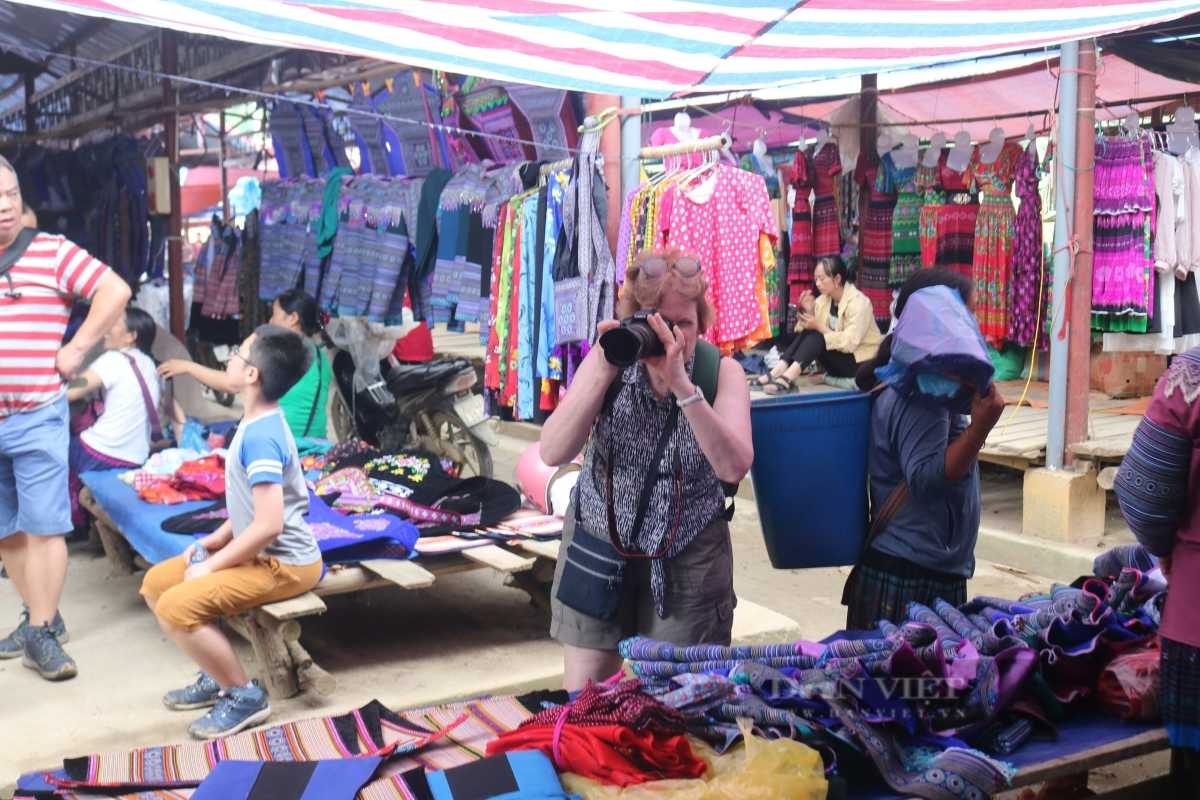
Meeting the People: Ethnic Groups and Local Life
Connecting with the people of Cao Son Market is one of the most rewarding aspects of your visit. Here, every encounter is a chance to interact with locals, many of whom represent the diverse ethnic groups in Lao Cai. The market is a true crossroads of culture, where a smile or a respectful greeting can lead to unexpected moments of genuine cultural exchange in Vietnam. By taking the time to observe, listen, and participate, you open the door to experiences that go far beyond sightseeing.
You’ll notice that vendors and shoppers alike come from a rich tapestry of backgrounds—Hmong, Phu La, Dzao, Tay, and more—each adding their own language, customs, and energy to the vibrant scene. The atmosphere is welcoming and lively, yet it’s important to approach every interaction with respect and curiosity. Whether you’re sharing a meal, asking about a craft, or simply admiring traditional attire, you’ll be met with warmth if you show genuine interest in the lives of those you meet.
If you want to truly connect with the heart of Cao Son Market, practice patience, observe local etiquette, and embrace every chance for a friendly exchange. These encounters will leave you with memories and insights no guidebook can offer. For more guidance on respectful interaction or to arrange a cultural tour, Asia Travel Links is always happy to help you experience the market in a meaningful way.
Friendly Encounters and Cultural Exchanges
Making friends at Cao Son Market is easier than you might think. Even if you don’t speak the language, a genuine smile or polite gesture goes a long way in this communal, welcoming environment.
- Smile and Use Simple Gestures: A warm smile and basic hand signals are universally understood and can break the ice quickly.
- Learn a Few Local Greetings: Saying “xin chào” (hello) or “cảm ơn” (thank you) in Vietnamese shows respect and delight, often earning a big grin in return.
- Respect Personal Space and Customs: Observe how locals greet each other, and avoid intrusive questions or actions—especially with elders and children.
- Buy Something Small: Purchasing a snack or a handmade item can spark a friendly conversation and build instant rapport.
- Share a Moment: Whether it’s exchanging a laugh, sharing a cup of tea, or helping carry a basket, these simple acts foster real connection.
By following these respectful travel tips, you’ll find that Cao Son Market opens up in the most welcoming way, offering you not just goods, but genuine cultural exchange Vietnam is famous for. To maximize your chances of meaningful encounters, consider joining a market tour with a local guide through Asia Travel Links.
Stories from Hmong, Phu La, Dzao, and Tay Vendors
Many of the most memorable moments at Cao Son Market come from simple, unhurried conversations with its vendors. People from the Hmong, Phu La, Dzao, and Tay communities each have a story to share—about their crafts, their families, and their journeys through the rugged hills to reach the market.
- Hmong Vendors: Often recognized by their vibrant embroidered attire, Hmong sellers might show you the intricate needlework passed down for generations.
- Phu La Artisans: These skilled weavers are known for their unique patterns and are sometimes willing to explain the meaning behind the motifs if you ask gently.
- Dzao Herbalists: You may spot Dzao women with their distinctive red headscarves selling herbs or home remedies and are usually happy to talk about traditional uses.
- Tay Traders: Warm and reserved, Tay vendors bring in rice, seasonal fruits, or woodwork, and may share a story about their village or their favorite part of market day.
- Communication Tools: Bringing a notebook, phrasebook, or translation app shows effort and respect, helping bridge the language gap for a deeper conversation.
Taking the time to engage with these vendors will deepen your appreciation for the vibrant life of Cao Son Market. It’s an opportunity to learn directly from those who keep these traditions alive. If you’re eager to meet these artisans or want tailored translation support, reach out to Asia Travel Links for a guided experience that’s both insightful and unforgettable.
Isabella's Connection: A Smile, a Story, and a Handshake at Cao Son
Travel, for me, isn't just about seeing famous sights; it's about connecting with people, bridging gaps, and finding common ground. At Cao Son Market, a place where language could have been a formidable barrier, I discovered the profound power of a simple smile, leading to one of the most memorable encounters Vietnam has ever given me. It was a true human connection Cao Son style, transcending words.
The market, as expected, was a riot of colors and sounds. I was captivated by a stall where an elderly Hmong woman sat, her face a roadmap of wrinkles, yet her eyes twinkled with warmth. She was meticulously embroidering a piece of fabric, her fingers surprisingly nimble as they worked with vibrant threads. I hovered, admiring her work, acutely aware of my inability to communicate verbally beyond a hesitant "Xin chào."
She looked up, a knowing smile crinkling the corners of her eyes. I gestured towards her intricate embroidery, offering a thumbs-up. She nodded, then picked up a finished piece – a small, beautifully stitched flower. With a gentle hand, she offered it to me. I hesitated, thinking she was trying to sell it, but her gesture seemed to be one of pure offering, a share of her artistry. I tentatively reached out, and as I took the flower, our fingers brushed. Her hand, worn from years of labor, was surprisingly soft.
A thought sparked in my mind. I reached into my bag for a small, woven friendship bracelet I carried, a little token from my own culture. I offered it to her, mirroring her earlier gesture. Her eyes widened slightly in surprise, then a beautiful, genuine smile spread across her face, transforming her features. She took the bracelet, examining it with curiosity, then looked back at me, her smile unwavering.
Neither of us spoke the other's language, but in that moment, words felt utterly superfluous. It was a pure cultural interaction story, told through gestures and smiles. She pointed to her heart, then to me, a universal sign of warmth and connection. I echoed the gesture. Then, unexpectedly, she extended her hand. It wasn't a formal shake, but a soft, warm clasp, a simple, profound exchange of mutual respect. In that handshake, I felt generations of tradition, resilience, and the inherent kindness of a stranger. We stood there for a beat, just holding hands, two people from vastly different worlds, perfectly understanding each other. It was a fleeting moment, but one that cemented itself deep in my memory.
This encounter at Cao Son reinforced a crucial travel lesson: authentic connections often happen in unexpected ways, especially when language is a barrier. It taught me that genuine curiosity, a warm smile, and a willingness to simply be present are far more powerful than any phrasebook. Carrying a small, meaningful token from your own culture can sometimes facilitate these interactions beautifully, creating a unique exchange that transcends commerce. It’s about building bridges, one heartfelt gesture at a time.
Actionable Practical Takeaways:
- Lead with a Smile: A genuine smile is the most universal language and can immediately put locals at ease.
- Observe and Appreciate: Before approaching, take time to quietly observe local life and work. Show genuine interest in what people are doing.
- Use Polite Gestures: A nod, a respectful bow of the head, or a thumbs-up can communicate appreciation and respect effectively.
- Carry Small Tokens (Optional but Recommended): Small, inexpensive, culturally neutral items from your home country (like a sticker, a pin, or a small bracelet) can be wonderful for informal, reciprocal exchanges, fostering goodwill.
- Ask Permission for Photos (Crucial): Always, always ask before taking a picture of someone, especially children. A simple gesture (pointing to your camera, then to them, with a questioning look and a smile) usually suffices. Respect a "no."
My moment with the Hmong woman at Cao Son Market was a powerful reminder that the true richness of travel lies not in the things you buy, but in the human connection Cao Son so beautifully offers. It was a beautiful, wordless story of mutual respect and unexpected warmth, a treasure I’ll carry with me always.
Recommendation: If your travel goal is to experience profound human connection Cao Son style, to truly bridge cultural divides, and to collect memorable encounters Vietnam has to offer, then spending time observing and gently interacting with the locals at Cao Son Market is essential. Go with an open heart; you never know what beautiful story might unfold.
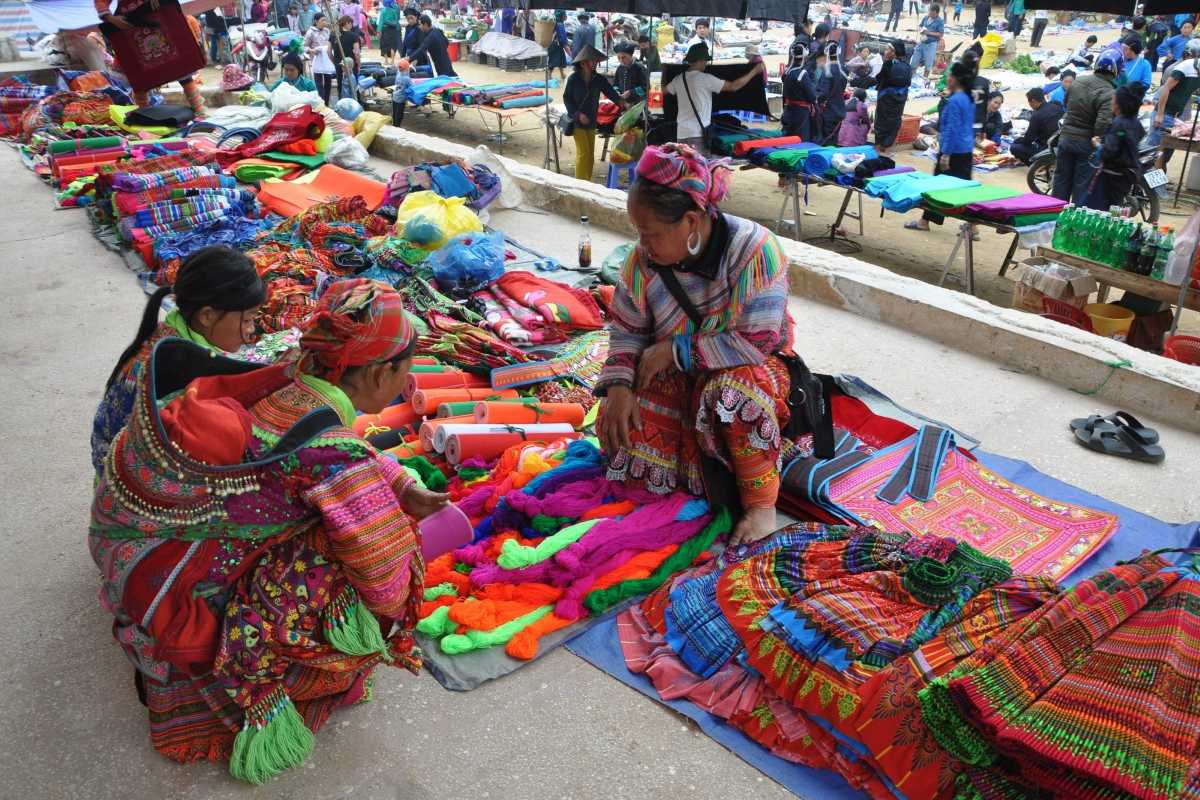
Unique Souvenirs and What to Bring Home
When it comes to finding the perfect keepsake, Cao Son Market stands out for its range of authentic, handmade treasures that support local artisans and celebrate the cultural spirit of Lao Cai. Shopping here is more than just picking up a souvenir—it’s about making ethical, meaningful purchases that bring a piece of your journey home and help sustain traditional crafts for future generations. Whether you’re drawn to intricate embroidery, striking silverwork, or practical items crafted with care, there’s something to match every traveler’s style.
Not sure what to choose? Use this guide to find the most authentic, impactful gifts and support the talented creators who make Cao Son Market so memorable. If you want to learn more about the story behind your souvenir or connect with the maker, ask questions or consider booking a cultural market tour through Asia Travel Links for a truly personal shopping experience.
Handcrafted Textiles, Silver Jewelry, and Traditional Goods
Cao Son Market is a showcase of artistry and living heritage, offering some of the region’s most prized crafts and traditional goods.
- Handcrafted Textiles: Discover intricate hemp embroidery and natural indigo-dyed fabrics. Each ethnic group brings its own motifs, patterns, and color palettes, reflecting generations of skill and meaning in every stitch.
- Ethnic Silver Jewelry: Browse for ornate necklaces, bracelets, and earrings—often crafted by hand, sometimes passed down as family heirlooms. Look for details unique to Vietnam’s highland cultures.
- Woven Baskets and Bags: Made from bamboo or rattan, these practical, eco-friendly items are as beautiful as they are useful.
- Wood Carvings and Tools: Find hand-carved figurines, utensils, and everyday tools that tell the story of local life and tradition.
- Traditional Clothing and Accessories: From embroidered hats to patterned sashes, these pieces serve both as souvenirs and as a window into Lao Cai’s cultural diversity.
Every purchase is a small act of preservation, supporting artisans and celebrating what makes Cao Son Market and the highlands of Vietnam so distinctive. Don’t hesitate to ask about the origin or meaning of a craft—it’s part of the experience. For those who want to meet the makers, Asia Travel Links can help arrange workshops or guided visits to artisan stalls.
Shopping Tips: How to Find Authentic Items
Shopping at Cao Son Market is most rewarding when you know how to spot the real thing and buy with confidence.
- Look for Signs of Handmade Work: Authentic items have irregularities, tiny imperfections, and unique details—unlike the uniform look of factory goods.
- Ask Questions About the Craft: Sellers are often proud to share stories about their techniques, materials, and family traditions.
- Respectful Bargaining: Bargain with a smile and patience. Fair negotiation is expected, but keep it lighthearted and never pushy.
- Support Artisans Directly: Buy from the person who made the item, rather than middlemen, whenever possible.
- Prioritize Ethical Choices: Choose natural materials and avoid any goods that seem mass-produced or disconnected from local culture.
These shopping guide tips will help you bring home only authentic crafts from Cao Son Market while practicing ethical shopping in Vietnam. Remember, every thoughtful purchase is a vote for cultural preservation and artisan livelihoods. For those seeking more guidance, our team at Asia Travel Links is ready to connect you with the market’s most reputable craftspeople and unique finds.
Olivia's Treasure Hunt: Finding the Perfect Keepsake at Cao Son
For me, souvenirs aren't just trinkets; they're tangible memories, whispering tales of distant places and the people who made them. My visit to Cao Son Market was a particularly meaningful treasure hunt, a quest for that one perfect keepsake that truly embodied the spirit of the highlands. It was an unforgettable Cao Son shopping experience, leading me to discover not just an item, but the heart of an authentic craft story.
As I navigated the bustling lanes, my eyes scanned for something beyond the typical. I wasn't after mass-produced items; I wanted something that sang of handmade artistry and local tradition. Amidst the vibrant displays of produce and livestock, I spotted a quieter corner where an elderly woman, her hands gnarled but agile, was meticulously weaving what appeared to be small, intricate bags. She was from the Tay ethnic group, I later learned through a local guide.
Her loom was simple, almost primitive, yet from it emerged patterns that were incredibly complex and beautiful. The colors were natural dyes – deep indigo, earthy browns, and the occasional flash of muted red. I watched, mesmerized, as her fingers moved with practiced rhythm, pushing threads through, tightening each stitch. It was a meditative process, a slow dance of creation. This was it. This was the authenticity I was searching for, the true spirit of finding unique souvenirs.
I approached cautiously, offering a polite "Xin chào." She looked up, her gaze steady and kind, a faint smile on her lips. I pointed to a small, completed shoulder bag, about the size of a clutch, adorned with a geometric pattern in indigo and cream. It felt sturdy, the fabric having a satisfying roughness to the touch, and the colors were rich, not garish. I asked, through rudimentary gestures and the help of a friendly nearby vendor who spoke a few words of English, about the story behind the pattern.
The weaver, with gentle patience, explained (or rather, demonstrated and had translated) that the pattern was ancient, passed down through generations in her family. Each diamond and zigzag represented elements of their natural world – mountains, rivers, rice paddies. She spoke of the plants used for the dyes and the long hours spent at the loom. Her hands, though aged, moved gracefully as she showed me the various stages of dyeing and weaving. There was immense pride in her eyes as she shared this knowledge. My purchase suddenly felt less like a transaction and more like becoming a custodian of a tiny piece of her heritage, carrying forward a bit of her family’s legacy.
We settled on a fair price after a bit of polite back-and-forth (a respectful part of the market culture), and as she wrapped the bag in a simple banana leaf, her smile widened. My heart swelled with the joy of finding not just a souvenir, but a tangible connection to the artisan and her story. It wasn't just a bag; it was a woven tale, a piece of Cao Son's soul.
My experience confirmed that the most rewarding shopping at Cao Son, and indeed in many authentic markets, happens when you seek out the craftspeople themselves. Look for individuals who are actively making or finishing their products on-site. This is your best indicator of authenticity. Don't be afraid to engage (respectfully!) with gestures or a few translated words; the story behind the craft significantly enhances the item's value and your connection to it.
Actionable Practical Takeaways:
- Look for Live Crafting: Prioritize stalls where artisans are actively working (weaving, embroidering, carving). This almost guarantees authenticity.
- Ask About the Process: If you have a guide, ask them to inquire about how an item is made or the significance of its patterns. This adds immense value to your purchase.
- Bargain Respectfully: Bargaining is common, but do so with a smile and good humor. Start slightly lower than the asking price, but be fair. Remember, you're supporting local livelihoods.
- Feel the Fabric/Material: Authentic handmade textiles often have a different texture than machine-made ones. Familiarize yourself with how local materials feel.
- Carry Small Bills: Easier for bargaining and quick transactions.
- Pack Light for Shopping: Bring a foldable bag to carry your treasures, as many vendors won't have extensive packaging.
Walking away from Cao Son Market, clutching my hand-woven bag, I felt a deep sense of satisfaction. My Cao Son shopping experience was more than just acquiring an item; it was about the thrill of the hunt, the beauty of the craft, and the warmth of a shared human moment. This little bag will forever carry the spirit of the highlands and its incredible authentic craft stories.
Recommendation: For those who cherish meaningful keepsakes and seek to support genuine local artistry, a treasure hunt at Cao Son Market is an absolute must. Be patient, observe closely, and don't hesitate to engage with the artisans. You'll not only find a unique souvenir but also carry home a piece of a truly remarkable authentic craft story.
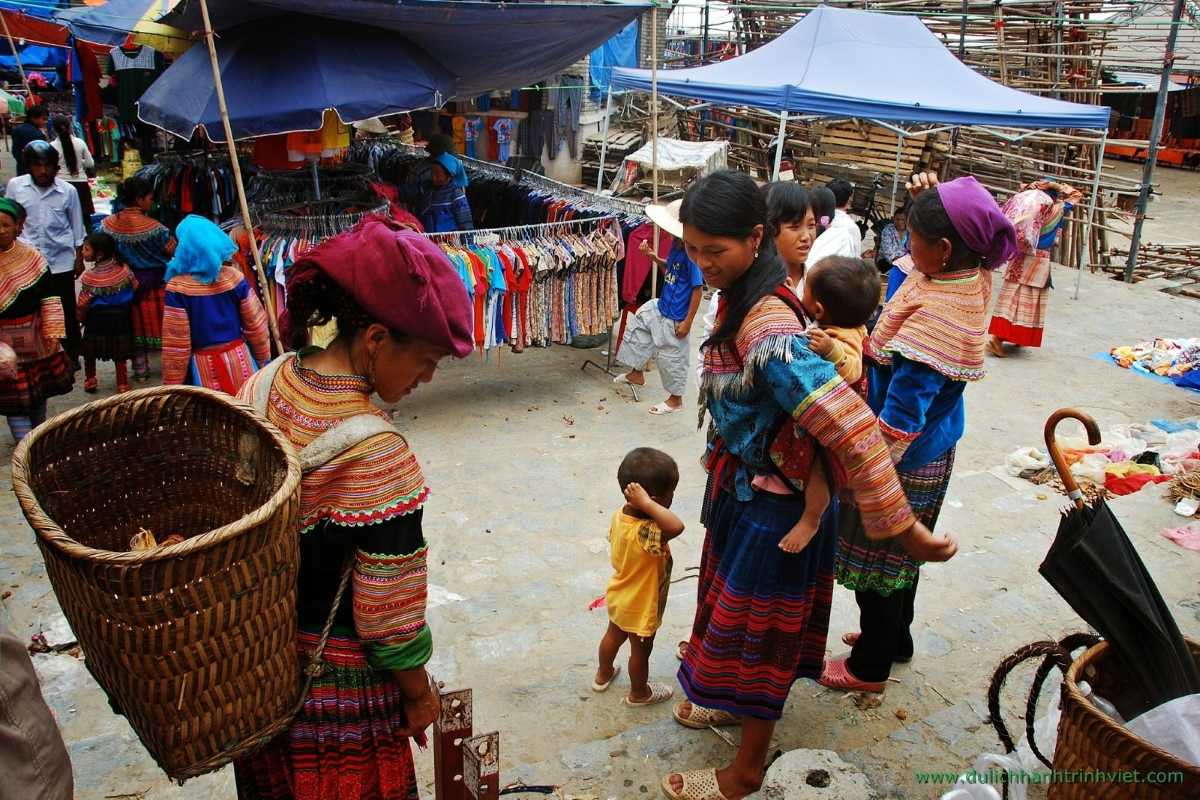
Exploring Beyond the Market: What’s Nearby?
Cao Son Market is just the beginning of what makes this part of Lao Cai a standout destination for travelers eager for authentic adventure. Once you’ve soaked up the atmosphere of the highland bazaar, the wider region opens up a world of possibilities. From vibrant ethnic markets to tranquil villages, scenic nature walks, and hidden gems rarely found in guidebooks, Northern Vietnam invites you to linger longer and explore deeper.
Wandering beyond Cao Son Market, you’ll discover that each corner of Lao Cai reveals new facets of regional culture, natural beauty, and human connection. Exploring these attractions means experiencing Northern Vietnam’s living traditions, making every day of your journey memorable. Ready to plan a fuller, richer trip? Let Asia Travel Links help you weave these discoveries into your itinerary for a journey that goes far beyond the expected.
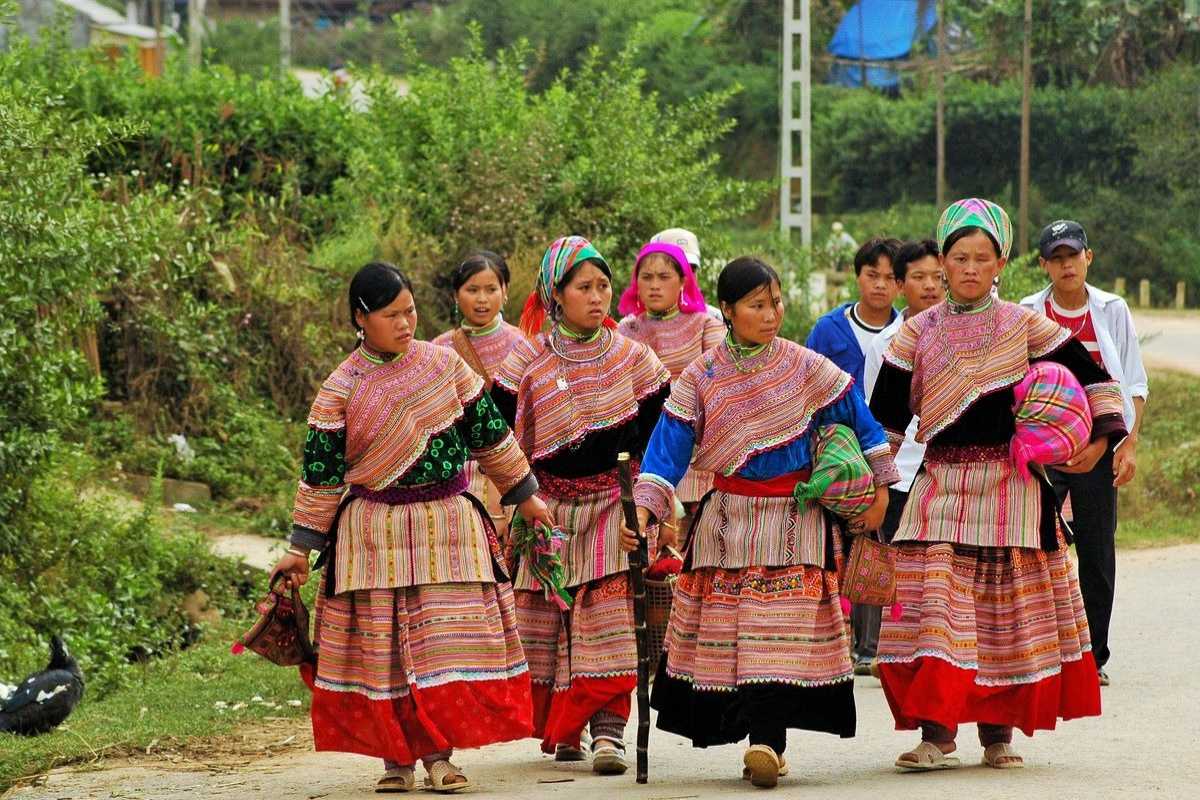
Other Must-See Markets in Lao Cai Province
Cao Son Market sits at the heart of a region famous for its bustling, colorful markets—each with its own character and local flavor. Visiting several markets allows you to experience the diversity of Lao Cai and find the atmosphere that best matches your interests. Whether you want to witness the famous horse trade at Can Cau, meet the Flower Hmong in Bac Ha, or simply compare the scale and spirit of different gatherings, here’s what to know about the main options.
If you’re passionate about ethnic cultures or traditional commerce, comparing these ethnic markets in Vietnam helps tailor your travel plan. Most travelers find that blending several market visits makes for a richer understanding of the region’s economic and social rhythms.
Considering extending your market tour? Asia Travel Links can help build a customized route through Lao Cai Province markets, ensuring you see the best of each.
Bac Ha Market, Can Cau Market, and Local Comparisons
When choosing which markets to explore in Lao Cai, it’s worth comparing their unique draws, sizes, and cultural ambiance.
- Bac Ha Market: Famous for its vibrant Sunday market, Bac Ha is the largest in the region, drawing a huge mix of ethnic groups (especially Flower Hmong) and visitors. It’s more crowded but ideal for those wanting maximum energy and color.
- Can Cau Market: Held on Saturdays, Can Cau is smaller, set on a scenic hillside, and especially known for its horse trading and traditional attire. The atmosphere is lively yet a bit less commercialized than Bac Ha.
- Cao Son Market: Distinct for its intimate scale, less-seen ethnic minorities, and strong focus on local produce and livestock. It’s quieter, more personal, and perfect for travelers seeking deep authenticity.
- Comparison Notes: Bac Ha is the place for spectacle, Can Cau for animal trading and hillside views, while Cao Son Market excels in authenticity and community feel.
Each market has its strengths, but for travelers who value a genuine, low-crowd experience, Cao Son Market often leaves the deepest impression. If you’d like expert help comparing markets or arranging travel, reach out to Asia Travel Links for recommendations and seamless booking.
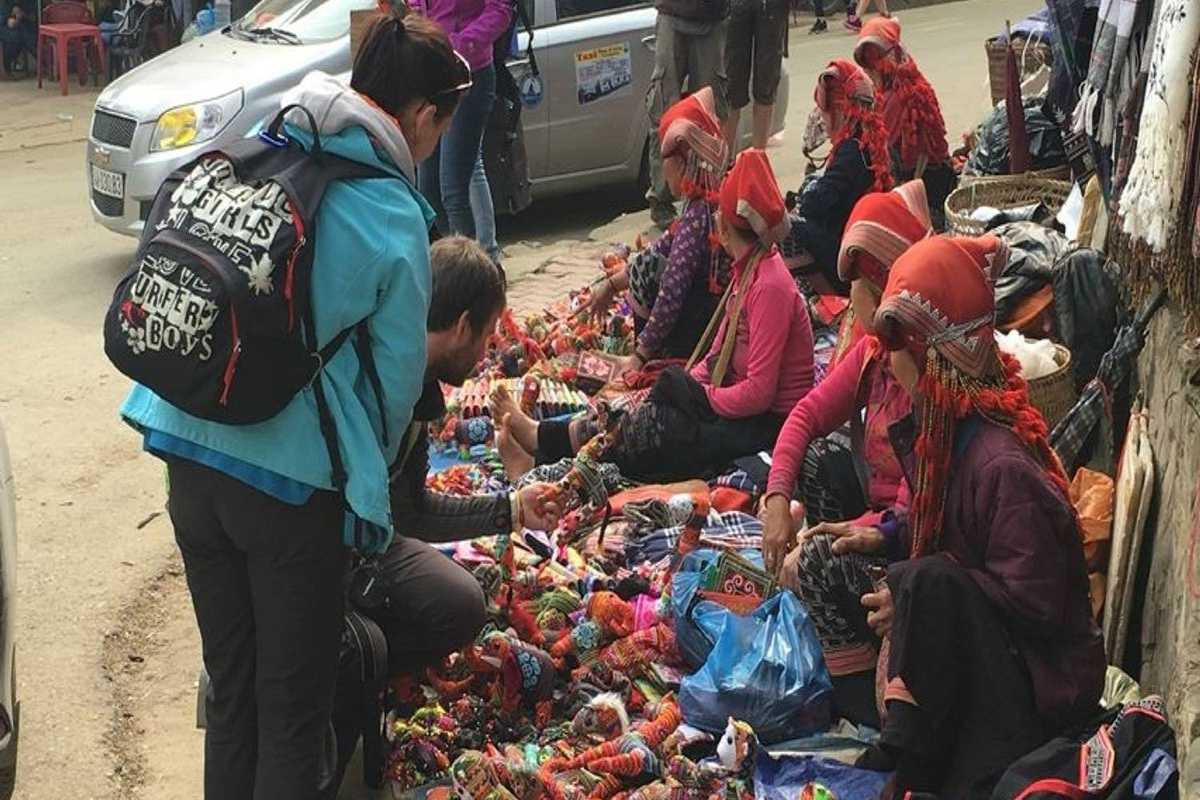
Villages and Hidden Gems Around Cao Son
Venture beyond Cao Son Market and you’ll find that the region is a mosaic of tranquil villages and secret corners rarely seen by the average traveler. Lao Cai is full of places where time seems to slow down—hidden gems where daily life unfolds much as it has for generations. Exploring these spots means trading crowds for quiet moments, encountering real hospitality, and gathering stories you won’t find in any guidebook.
If you’re searching for that elusive, off-the-beaten-path Vietnam experience, the villages near Cao Son Market are your gateway to true discovery. Let Asia Travel Links show you how to unlock these memories and meet the people who call this region home.
Walking Tours to Nearby Ethnic Villages
If you want a genuine taste of highland culture, consider joining a walking tour to the nearby Hmong, Dao, or Tay villages around Cao Son Market. Local guides offer safe, enriching experiences, introducing you to families and showing you daily life beyond the market stalls. Always remember: ask before taking photos, respect personal space, and never enter homes uninvited.
- Arrange tours with reputable providers (Asia Travel Links can recommend local experts).
- Dress modestly and learn a few polite greetings in the local language.
- Homestays are possible, giving you a chance to sleep in a stilt house, share meals, and experience authentic village routines.
- Always seek permission before photographing people, especially elders or children.
- Be sensitive to traditions—every ethnic group has unique customs and etiquette.
A respectful approach transforms your visit into a genuine exchange. Ready to book an immersive ethnic village tour or homestay? Contact Asia Travel Links for the latest options and trusted guides.
Nature Treks, Rice Terraces, and Scenic Views
For nature lovers and photographers, the surroundings of Cao Son Market offer a feast of landscapes waiting to be explored. Well-trodden footpaths weave past terraced rice fields, ancient bamboo groves, and remote hamlets clinging to green hillsides. Along these trails, you might stumble upon a hidden waterfall, a tranquil riverbank, or a farmer tending water buffalo beneath the open sky.
- Follow marked Cao Son trekking routes through rice terraces—best from May to September, when fields glow green or golden.
- Seek out local guides for short or multi-day hikes to highland viewpoints above the clouds.
- Look for scenic picnic spots along the Chay River or near misty forest edges.
- Don’t miss sunrise or sunset—the light across the paddies is unforgettable.
- Watch for traditional farming in action, especially during planting or harvest seasons.
Exploring on foot connects you with the land and its rhythms in ways no vehicle can. Want detailed maps or help arranging your perfect trek? Reach out to Asia Travel Links for advice, routes, and the latest trail conditions.
Thomas's Tranquil Trails: Discovering Cao Son's Surroundings
After the vibrant, joyous chaos of Cao Son Market, I craved a different kind of immersion – one in the serene embrace of nature. I knew the market was nestled in the highlands, but I wanted to truly feel that remoteness. What unfolded was a journey along Thomas's Tranquil Trails, an unexpected and deeply calming exploration that showcased the profound beauty of Cao Son nature walks, proving that even in bustling Vietnam, truly tranquil places Vietnam exists, just a stone's throw away.
Stepping away from the market's cheerful hubbub, the sounds gradually softened. The calls of vendors faded, replaced by a symphony of nature. The first thing that struck me was the birdsong – a chorus of unfamiliar chirps and trills echoing from the surrounding treeline. Then came the gentle rustle of leaves as a soft breeze swept through the emerald rice paddies. The air itself shifted, becoming cleaner, imbued with the crisp scent of damp earth and the sweet perfume of unseen wild blossoms.
I followed a narrow dirt path, barely a trail, that wound its way up from the market, seemingly into nowhere. But "nowhere" was, in fact, everything. Lush green unfolded in every direction: tiered rice terraces, carved with ancient precision, cascaded down the hillsides like colossal staircases. The occasional glint of water reflected the overhead sky, a serene mirror in the landscape. I passed solitary farmers, their conical hats bobbing as they tended their fields, sometimes pausing to offer a shy, genuine smile. There was no rush, no pressure, just the quiet rhythm of their daily lives.
The feeling of quiet solitude was profound. Here, the only sounds were natural: the distant murmur of a hidden stream, the buzzing of insects, and my own footsteps crunching on the earth. I stumbled upon a small, cascading waterfall, its waters tumbling over moss-covered rocks, creating a refreshing mist that kissed my face. It wasn't a grand, famous waterfall, just a humble, exquisite secret tucked away, waiting to be discovered. I paused, mesmerized by its simple beauty, feeling an incredibly deep connection to this untouched pocket of the world. Later, I spotted a flash of iridescent blue – a dragonfly darting amongst wild orchids growing beside the path, a tiny burst of unexpected magic. This wasn't just Northern Vietnam hiking; it was wandering through a living, breathing painting.
My foray into Cao Son's surroundings revealed that the market is just one facet of its charm. The natural beauty immediately outside its bounds offers a completely different, yet equally rewarding, experience. The key is to be open to simply wandering, letting the paths lead you. These are not always marked trails, so a good sense of direction or a local guide is beneficial. The truly profound aspect is how closely intertwined human life (the farmers, the small villages) is with this untouched nature, creating a harmonious and very peaceful atmosphere.
Actionable Practical Takeaways:
- Wear Sturdy Footwear: Trails can be uneven, muddy after rain, and rocky. Good hiking shoes or sturdy sneakers are essential.
- Bring Water: There are no shops once you leave the market area, so carry ample water to stay hydrated.
- Respect Private Property: If you see fields or homes, observe from a respectful distance. Do not trespass unless explicitly invited.
- Consider a Local Guide for Deeper Exploration: For more extensive treks or to truly understand the flora, fauna, and local farming practices, hiring a local guide is invaluable. They can reveal hidden paths and share insights you'd never find alone.
- Pack Light Layers: The weather in the highlands can change quickly. Layers allow you to adjust to temperature fluctuations and unexpected rain.
- Silence Your Phone: To fully immerse yourself in the tranquility, consider silencing notifications and truly being present with the sounds of nature.
My time among Thomas's Tranquil Trails beyond Cao Son Market was a soulful escape, a beautiful counterpoint to the market's energy. It provided a profound feeling of connection to nature and a quiet solitude that recharged my spirit. It truly solidified Cao Son as not just a market, but a gateway to discovering tranquil places Vietnam holds close to its heart.
Recommendation: For those who seek moments of profound peace and a deep connection with nature, venturing beyond the immediate bustle of Cao Son Market for a Cao Son nature walk is an absolute must. It's an opportunity for quiet discovery and a refreshing escape into the pristine beauty of Northern Vietnam's hiking landscapes.
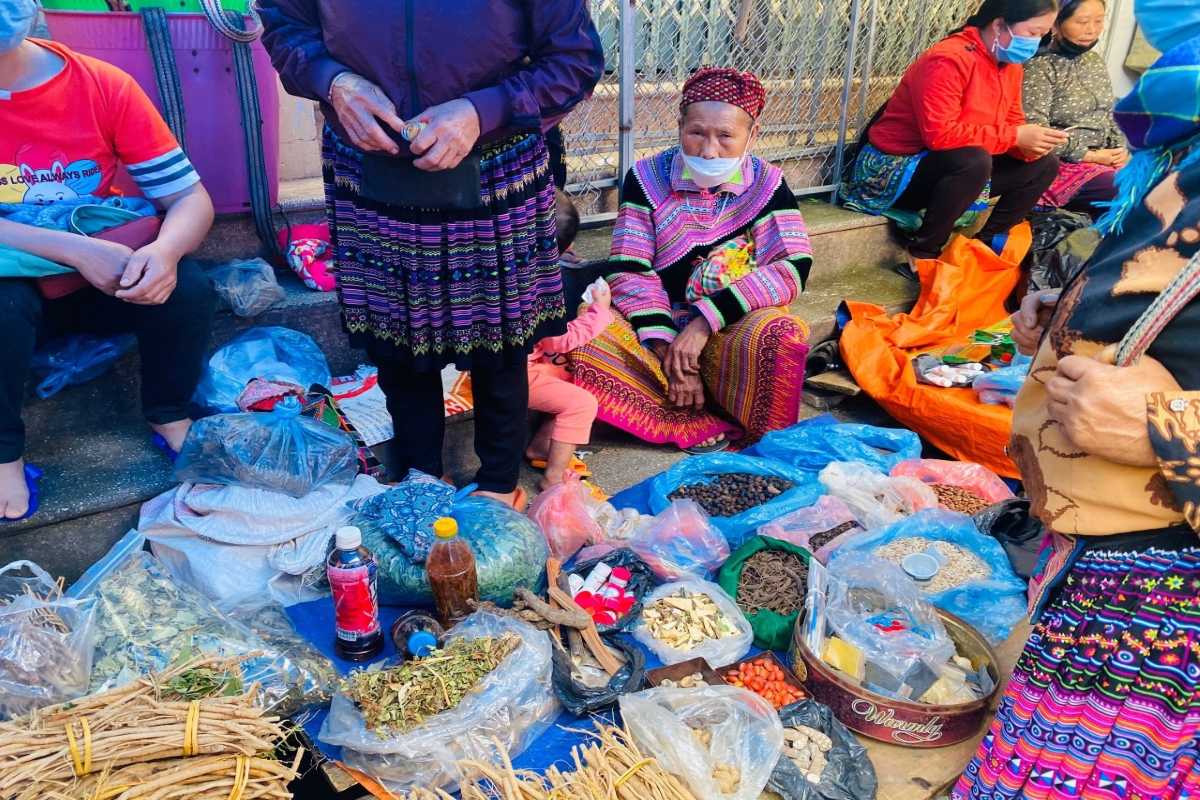
Suggested Itineraries and Day Trip Ideas
Wondering how to fit Cao Son Market into your travel plans? With a bit of strategy, you can blend this vibrant highland market seamlessly into an unforgettable journey across Lao Cai and the broader reaches of Northern Vietnam. Whether you have just one day or several, the right itinerary can maximize your experience, reveal new landscapes, and reduce travel stress. Choose from flexible day trips or more immersive multi-day adventures—there’s a plan for every pace.
Combining Cao Son Market with Other Regional Attractions
For the most rewarding journey, consider combining a visit to Cao Son Market with other regional highlights. Logical routes link Sapa, Bac Ha, and even the gateway to the Ha Giang Loop, creating an efficient path through some of Vietnam’s most celebrated landscapes and markets.
- Sapa → Cao Son Market: Begin in Sapa, depart early, and reach the market in about 2.5–3 hours by car or minibus. Continue to Bac Ha for an overnight stay or loop back to Sapa.
- Cao Son Market → Bac Ha: Travel directly to Bac Ha (about 1 hour), then explore Bac Ha Market or other local sights.
- Multi-stop circuit: Sapa → Cao Son Market → Bac Ha → Ha Giang. This allows you to experience three iconic markets and transition into the rugged scenery of the Ha Giang Loop.
These routes provide a variety of landscapes and cultural encounters, letting you experience the best of Northern Vietnam. Ready to build your itinerary or need booking help? Contact Asia Travel Links for sample routes and current travel conditions.
Sample One-Day and Multi-Day Routes
Take the guesswork out of planning with these sample itineraries, designed to fit a range of schedules and travel styles. Each route includes recommendations for meals, activities, and lodging so you can focus on the adventure.
- One-Day Trip: Start in Sapa before dawn. Arrive at Cao Son Market by opening time to witness the bustling early hours. Sample breakfast at the market, browse the stalls, and enjoy a local lunch. Depart by early afternoon for Sapa or continue to Bac Ha for a sunset dinner and overnight stay.
- Two-Day Experience: Day 1—Sapa to Cao Son Market for the full market day, then overnight in Bac Ha. Day 2—Explore Bac Ha Market or take a guided trek through nearby villages, returning to Sapa or heading deeper into Lao Cai.
- Multi-Day Loop: Sapa → Cao Son Market → Bac Ha → Ha Giang. Spend each night in a new town, taking advantage of homestays or guesthouses recommended by Asia Travel Links. Enjoy diverse meals along the way, from market breakfasts to riverside dinners.
Well-structured travel plans let you enjoy every moment—no matter how long you stay. For custom itinerary support and real-time travel advice, reach out to Asia Travel Links.

Practicalities & Local Insights for a Seamless Visit
A smooth trip to Cao Son Market begins with the right information. From expert Northern Vietnam travel advice to on-the-ground tips that only seasoned travelers share, this section is your shortcut to a seamless and memorable experience. Here you’ll find practical answers to common questions, solutions for potential pain points, and proven advice for making the most of your visit—so you can explore with total confidence and comfort.
Whether it’s finding the best place to stay, booking with peace of mind, or knowing how to pack for the highlands, you’ll avoid surprises and enjoy the vibrant market at its best. If you want even more tailored support, you can always reach out to Asia Travel Links for one-on-one planning help.
Ready to travel smarter? Dive into these trusted Cao Son Market tips and enjoy a worry-free adventure in this unique part of Vietnam.
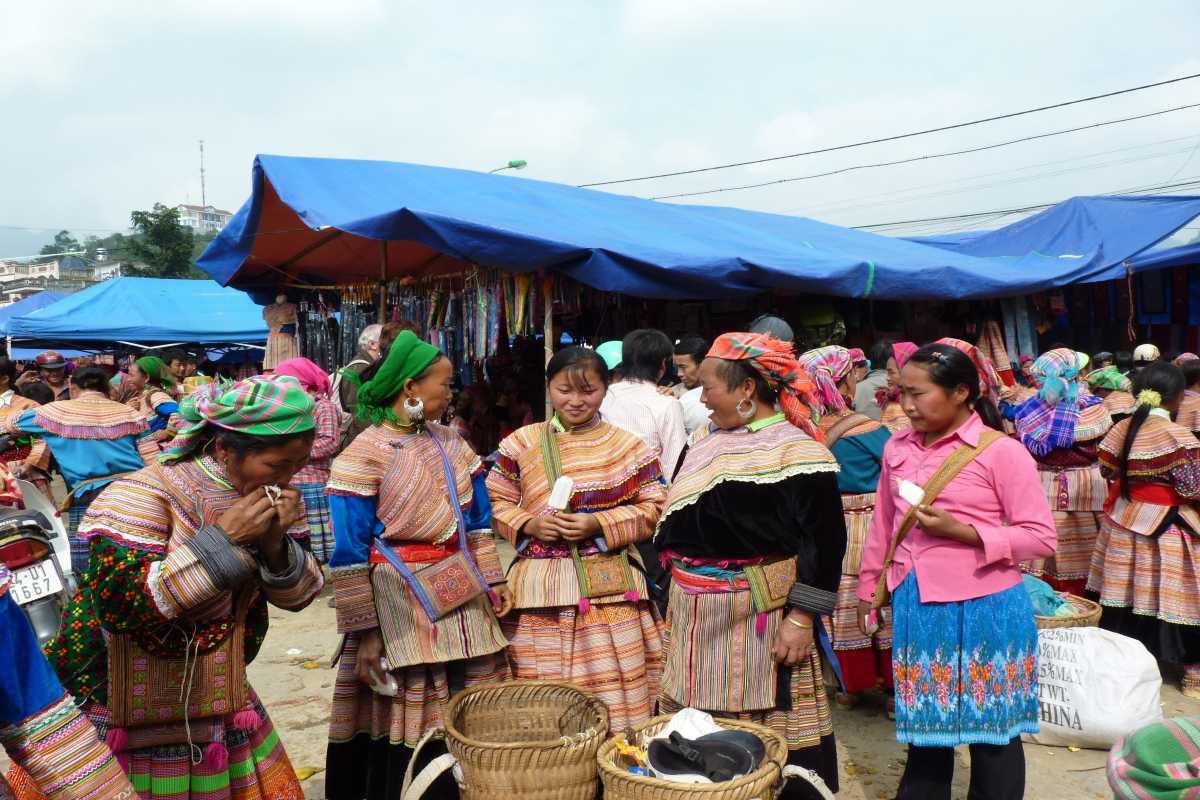
Accommodation Options Near Cao Son Market
When planning your visit to Cao Son Market, securing comfortable and convenient accommodation is essential for a restful trip. You’ll find a range of choices, from rustic ethnic homestays tucked in tranquil valleys to simple guesthouses in nearby towns such as Muong Khuong or larger hubs in Lao Cai. Whether you’re seeking immersion in village life or a few extra amenities, there’s an option to fit every style and budget.
To get the most out of your experience, book in advance, especially if your trip coincides with a busy market day. For real-time recommendations and easy bookings, Asia Travel Links can help you compare options and secure trusted lodging.
Choose your preferred stay and get ready to wake up refreshed, just steps from the heart of the market.
Types of Accommodation & Booking Tips
The area around Cao Son Market offers unique overnight experiences, each with its own character and comfort level. Here’s what you need to know before you book:
- Traditional homestays: Experience authentic highland hospitality in Hmong or Tay villages. Expect basic but cozy rooms, shared meals with your host family, and a deep sense of connection to local life.
- Guesthouses in Muong Khuong: A step up in amenities—private rooms, hot showers, Wi-Fi, and proximity to town conveniences. Prices generally range from 300,000–600,000 VND per night.
- Lodging in Lao Cai: Ideal if you prefer more choices and comfort, with mid-range hotels, English-speaking staff, and easy transport links. Booking platforms and tour operators offer reliable reservation support.
- Book early for market days: Homestays and guesthouses fill up quickly on Wednesdays, when the market draws crowds from around the region.
- Stay close or stay comfy: Staying in a village or next to the market means early access and immersive experience, but larger towns like Muong Khuong or Lao Cai offer more amenities, restaurants, and services.
With a clear idea of what to expect, booking your accommodation near Cao Son Market is simple and secure. For help matching your preferences with the best local options, you can always contact Asia Travel Links.
Ready to find your perfect place to stay? Book early, check guest reviews, and secure your ideal base for an unforgettable market adventure.
Minh's Homestay Haven: A Night with Local Flavors
After a full day of soaking in the vibrant energy of Cao Son Market, I craved a quiet, authentic landing. While there aren't many conventional hotels in the immediate vicinity, I'd heard whispers of local homestays. And so began my dive into Minh's Homestay Haven, an experience that transcended mere lodging, becoming a beautiful chapter of local living Cao Son style, offering a taste of genuine Vietnamese hospitality that no hotel could ever replicate. It truly cemented my belief in the profound value of a homestay experience Vietnam can offer.
My chosen homestay was a traditional stilt house, crafted from dark wood, perched gracefully amidst a small cluster of rice paddies just a short, scenic walk from the market. As I approached, a chorus of happy barks from a friendly dog greeted me, quickly followed by the warm, beaming smile of my host, Mrs. Minh. Her welcome was immediate and heartfelt, as if I were a long-lost relative returning home. The air, cool and fresh after the market, carried the faint scent of woodsmoke and blooming night-jasmine.
Inside, the living space was simple yet incredibly cozy. A large, communal area with low wooden tables and floor cushions served as the heart of the home. My sleeping quarters were a private, curtained-off section on the elevated platform, complete with a comfortable mattress, mosquito net, and a surprisingly warm blanket. The "comfort" was in its charming rustic nature – the creak of the wooden floors, the gentle breeze rustling through the open windows, the quiet hum of rural life just outside. It was a stark, welcome contrast to city hotel rooms, reminding me I was truly in the heart of the highlands.
The evening was the highlight. Mrs. Minh, with her perpetually smiling eyes, motioned me towards the kitchen where a symphony of aromas was already building. With gestures and a few shared Vietnamese words, she invited me to help prepare dinner. I watched, fascinated, as she deftly chopped herbs and vegetables, showing me how to wrap fresh spring rolls with nimble fingers. We shared laughter over my clumsy attempts, and in those shared moments, a connection formed that transcended any language barrier. The meal itself was a feast: freshly caught river fish, stir-fried greens, fragrant sticky rice, and a delicious, subtly spiced pork dish. Each bite was a burst of local flavors, prepared with love and generations of culinary knowledge. Sitting around the low table with Mrs. Minh’s family, sharing food and quiet conversation, felt like a true privilege. It wasn't just dinner; it was a communal embrace.
Later, I learned a few simple words in the local Tay dialect from her teenage son, giggling as I stumbled over pronunciations. Before bed, Mrs. Minh offered a cup of warm, local herbal tea, its soothing steam rising in the quiet room. The sounds of the night were peaceful – the distant croaking of frogs, the gentle rustle of leaves, a stark contrast to any city noise. It was a profound feeling of being truly embedded in the local culture, a direct window into daily life.
Staying in a local homestay near Cao Son isn't merely about finding a place to sleep; it’s about choosing an immersive cultural experience. My time with Mrs. Minh demonstrated that homestays here offer unparalleled hospitality, access to authentic local cuisine, and genuine human connection. Don't expect luxury, but anticipate warmth, learning, and a profound sense of belonging. Communication often relies on gestures and smiles, which can lead to even richer, more memorable interactions. This is truly an authentic accommodation review from the heart.
Actionable Practical Takeaways:
- Book in Advance: Especially around market days, good homestays can fill up. Ask your tour operator or look for reputable options online (though direct booking might be less formal).
- Embrace Simplicity: Homestays are rustic. Expect shared bathrooms, basic amenities, and sleeping on mattresses on the floor (often comfortable, with clean bedding and mosquito nets).
- Bring a Small Gift: A small, simple gift from your home country (e.g., local chocolates, a postcard) is a thoughtful gesture of appreciation for your hosts.
- Participate (If Invited): If your hosts invite you to help cook, prepare tea, or join in daily activities, accept! These are invaluable opportunities for cultural exchange.
- Learn Basic Phrases: Even "Xin chào" (hello) and "Cảm ơn" (thank you) in Vietnamese (and perhaps the local ethnic language if you can find resources) go a long way.
- Manage Expectations for Connectivity: Wi-Fi might be slow or non-existent. Embrace it as a chance to disconnect and truly immerse yourself.
My night in Minh's Homestay Haven was the perfect capstone to my Cao Son Market adventure. It transformed a market visit into a genuine connection with the land and its people, proving that for an authentic local living Cao Son experience, a homestay is truly unbeatable.
Recommendation: If you truly want to immerse yourself in the culture of the Vietnamese highlands and experience hospitality that feels like family, I wholeheartedly recommend a homestay near Cao Son Market. It's an authentic accommodation review that speaks volumes – prepare for a warm welcome, delicious local flavors, and a homestay experience Vietnam that will undoubtedly be a highlight of your journey.
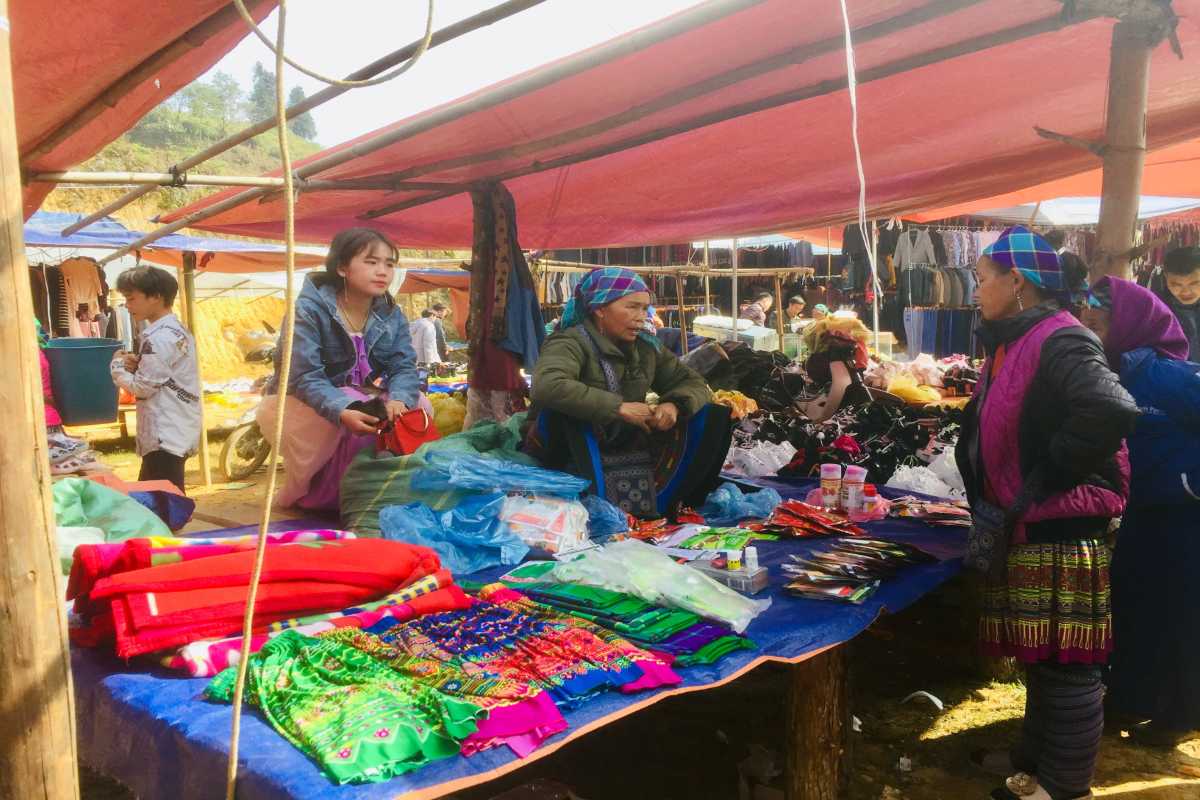
Essential Packing List for Cao Son & the Highlands
Preparing for your journey to Cao Son Market and the highlands of Lao Cai means packing with both comfort and respect in mind. The climate can shift quickly, and local traditions call for a bit of cultural awareness. Whether you’re braving mountain mornings, wandering bustling market lanes, or visiting villages across Vietnam, the right packing list will help you travel light and ready for anything.
Before you zip up your bag, double-check these essentials so you arrive confident, prepared, and respectful of local customs. If you’re unsure or want local insight, the experts at Asia Travel Links are always happy to share the latest travel essentials for Cao Son Market and beyond.
What to Bring for Comfort and Culture
Packing smart for Cao Son Market means blending practical gear with cultural sensitivity. Here’s what you shouldn’t leave behind:
- Sturdy walking shoes: Comfortable, non-slip footwear is a must for uneven market paths and trekking between villages.
- Layered clothing: Daytime can be warm but mornings and evenings are chilly, especially in winter. Layer up for flexibility.
- Rain gear: A lightweight, packable rain jacket is wise even in the dry season—weather in the highlands can change fast.
- Sun protection: Bring a wide-brimmed hat, sunglasses, and high-SPF sunscreen to guard against intense sun, especially at higher altitudes.
- Insect repellent: Highlands mean mosquitos, so pack spray or lotion to avoid bites.
- First-aid kit: Include basics like plasters, antiseptic, any personal medication, and digestive aids.
- Reusable water bottle: Stay hydrated without contributing to plastic waste—filtered or boiled water is recommended.
- Modest attire: Choose clothing that covers knees and shoulders, especially for village visits and cultural sites; avoid flashy or revealing outfits.
- Seasonal extras: In the rainy season (May–September), bring waterproof shoes and quick-dry clothes. In winter (December–February), pack gloves, a scarf, and a warm jacket.
A bit of planning goes a long way—pack light, but don’t skip the essentials that keep you comfortable and show respect for local traditions. For any questions about the latest weather or packing recommendations for Vietnam, contact Asia Travel Links and travel prepared for any adventure in the highlands.
Sophia's Smart Packing Secrets: Ready for Anything in Cao Son
Traveling to the highlands of Vietnam means embracing unpredictability. And let me tell you, when it comes to places like Cao Son Market, being prepared isn't just a suggestion; it's a superpower. My trip there solidified my belief in Sophia's Smart Packing Secrets, proving that a little foresight can turn potential travel headaches into effortless adventures. It’s truly one of the best travel hacks Vietnam offers for navigating its diverse climates.
I remember the morning perfectly. We'd had a gorgeous, clear drive to Cao Son Market, the sun blazing down, making me momentarily regret packing anything beyond a light jacket. "Perfect weather!" I thought, as I hopped out of the car, ready for my market stroll. The market was bustling, vibrant, everything I’d hoped for. I was deep in conversation with a vendor about some beautiful silver jewelry when, without warning, the sky turned an ominous charcoal grey. Within minutes, the heavens opened, unleashing one of those sudden, torrential highland downpours that seem to come out of nowhere.
Chaos erupted as people scrambled for cover. Most of the market is open-air, and shelter was sparse. Shoppers huddled under flimsy tarps or dashed for the nearest overhang. Panic started to set in as I pictured myself drenched, shivering, and facing a long, wet ride back to my accommodation.
But then, a small, triumphant smile spread across my face. That morning, despite the sunshine, I had listened to my inner voice (and years of smart packing travel experience). Tucked neatly into the side pocket of my daypack was my ultra-light, fully waterproof rain jacket. It was barely bigger than a paperback book, but it was my hero.
I quickly pulled it out and slipped it on. The hood provided excellent coverage, and the waterproof fabric shrugged off the heavy rain. While others around me were getting soaked, I was able to calmly observe the market in its new, rain-drenched state. The colors of the traditional clothes seemed even more vibrant against the wet ground, the air smelled intensely fresh, and the rhythmic drumming of rain on corrugated roofs created a new, fascinating soundtrack. I even managed to duck under a small awning and enjoy a hot bowl of Thang Co while the deluge continued, feeling utterly comfortable and smugly prepared.
The rain lasted about an hour, then just as quickly, it cleared. The sun emerged, steam rose from the wet earth, and the market resumed its cheerful buzz as if nothing had happened. I was dry, comfortable, and ready to continue exploring, while others were still wringing out their clothes. That little jacket proved its worth a hundred times over, cementing my philosophy on what I packed for Cao Son.
My experience underscored that the weather in the Vietnamese highlands is incredibly unpredictable. A clear morning can quickly turn into a rainy afternoon, even outside of the official rainy season. Therefore, layering and a compact, reliable waterproof layer are not just helpful, they are essential. Over-preparing for weather conditions, especially for a remote, outdoor market like Cao Son, genuinely enhances your experience and prevents discomfort. Don't let clear skies fool you; always have a plan B for rain or sudden temperature drops.
Actionable Practical Takeaways:
- Invest in a Packable Rain Jacket: Choose one that’s lightweight, waterproof (not just water-resistant), and easily stuffs into your daypack. This is non-negotiable for Cao Son Market.
- Embrace Layers: Pack clothing that can be easily added or removed. Mornings can be chilly, midday warm, and afternoons potentially rainy or cool again. Think moisture-wicking base layers, a fleece, and your rain jacket.
- Comfortable, Closed-Toe Shoes: You'll be walking on uneven terrain, potentially muddy paths, and through crowded areas. Leave the sandals for the beach. Good grip is key.
- Small Daypack: A lightweight daypack is perfect for carrying your essentials (water, jacket, snacks, camera, hand sanitizer) while leaving your hands free.
- Bring Plastic Bags/Dry Sacks: Even with a waterproof jacket, small plastic bags or dry sacks are invaluable for protecting electronics, money, and other valuables from unexpected downpours.
My "rain incident" at Cao Son Market was a fantastic, albeit sudden, lesson in preparedness. Thanks to Sophia's Smart Packing Secrets, I truly was ready for anything in Cao Son, turning a potential travel mishap into a comfortable and memorable part of my adventure.
Recommendation: Don't underestimate the unpredictable nature of highland weather! For a truly seamless and comfortable visit to Cao Son Market, adopt these smart packing travel principles. Being ready for anything in Cao Son will ensure your focus remains on the incredible cultural experience, not on battling the elements.
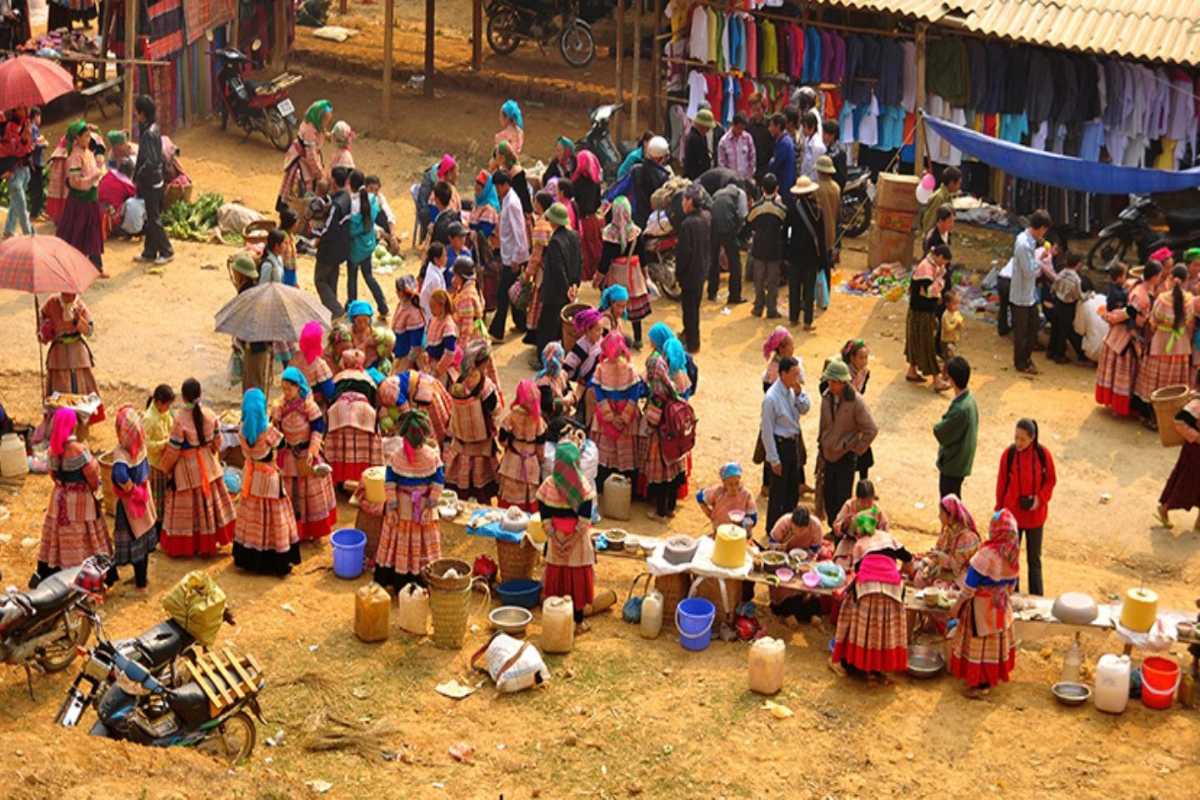
Money Matters: Currency, Exchange, and Budgeting
Handling money smoothly is essential for a worry-free visit to Cao Son Market and the surrounding areas in Lao Cai, Vietnam. Understanding the local currency, exchange options, and budgeting expectations helps you avoid surprises and focus on enjoying your trip.
Most transactions at Cao Son Market are cash-based, so it’s important to plan ahead. Knowing where and how to access Vietnamese Dong (VND) and having a realistic budget for daily expenses will keep your travel comfortable and hassle-free.
Be prepared with these key financial tips to make your money last and spend wisely in the highlands.
Local Currency, ATMs, and Payment Options
When visiting Cao Son Market, here’s what you need to know about money matters:
- Vietnamese Dong (VND): This is the official currency. Small denominations are useful for everyday purchases at the market.
- Limited ATMs: There are no ATMs directly at Cao Son Market. Withdraw cash beforehand in larger towns like Sapa or Lao Cai City to avoid inconvenience.
- Cash is king: Most vendors and local transport accept only cash. Credit cards are rarely accepted in rural areas.
- Typical costs: Expect to spend around 20,000 to 50,000 VND for local street food, 100,000 VND or more for souvenirs depending on quality, and 200,000 to 500,000 VND for transport or guided tours.
- Exchange tips: Use reputable exchange offices in cities for the best rates. Avoid exchanging money at random stalls to prevent scams.
By budgeting carefully and ensuring you have enough cash on hand, you’ll have smooth transactions and enjoy stress-free shopping and dining at Cao Son Market.
For updated financial advice and assistance with currency or budgeting, Asia Travel Links is ready to support your planning and travel needs.
Liam's Bargaining Bliss: Getting the Best Deals at the Market
Let's face it, for many Western travelers, the idea of bargaining can feel intimidating, even aggressive. But my time at Cao Son Market taught me that in Vietnam, it's often an art form, a friendly dance between buyer and seller that, when done right, can lead to both a good deal and a deeper connection. My experience in Liam's Bargaining Bliss transformed my perspective on market negotiation skills, offering valuable bargaining tips Vietnam style.
I had my eye on a beautiful, hand-embroidered textile – a wall hanging depicting a vibrant village scene. The vendor, a woman with a kind smile and sharp eyes, quoted a price that, while not exorbitant, felt a little high. My initial instinct might have been to walk away or simply pay, but I remembered the advice I'd been given: in Vietnamese markets, negotiation is expected and often enjoyed.
I started with a polite "Xin chào!" (hello) and a genuine smile. I complimented her on the intricate work, pointing to a particularly detailed section. This wasn't just flattery; I genuinely admired the craftsmanship. Then, with a gentle tone and a small laugh, I offered a price that was about 60% of her initial quote. She immediately shook her head, but her smile never wavered. She gestured to the quality of the fabric, the hours of work. It felt less like a confrontation and more like a friendly debate, a playful back-and-forth.
I countered with a slightly higher offer, again with a smile, mentioning (truthfully!) that I was on a tight travel budget experience. She then reached for a calculator and showed me a new number, still a bit above what I hoped. I pretended to hesitate, looking at another similar item at her stall, giving her a moment. Then, I offered my final, firm price, holding out the exact Vietnamese Dong in my hand. It was a fair price, one I was happy with and one I knew still allowed her a good profit.
She paused, looking from the money to my face, then back to the money. A twinkle appeared in her eye. She laughed, a warm, genuine sound, and took the money, pushing the textile towards me. "Okay!" she said, with a nod and an even wider smile. The sense of satisfaction wasn't just from getting a good deal, but from the positive, human interaction. We had played the game, both respectfully, and both walked away feeling good. It was a shared moment of cultural understanding, far more rewarding than a simple, silent transaction. This was the essence of market negotiation skills in practice – it’s about building rapport.
My bargaining experience at Cao Son taught me that negotiation in Vietnamese markets is a nuanced art. It's not about being aggressive or devaluing the product; it's about respectful engagement, patience, and a bit of playful back-and-forth. Vendors often quote higher initial prices expecting you to bargain, so don't feel shy about it. A smile, a few basic Vietnamese phrases, and genuine appreciation for their craft go a long way in fostering a positive exchange and achieving bargaining bliss.
Actionable Practical Takeaways:
- Always Start with a Smile and a Greeting: Politeness sets a positive tone. "Xin chào" (hello) is your best friend.
- Don't Show Too Much Enthusiasm: While you should be genuinely interested, don't appear desperate for an item, as this can limit your negotiation power.
- Have a Target Price in Mind: Before you start, decide what you're willing to pay. A common starting point for your offer is 30-50% of the initial quoted price, especially for tourist-centric goods.
- Bargain in Vietnamese Dong (VND): Always discuss prices in local currency. Vendors might quote in USD, but bargaining in VND often leads to better deals.
- Use Simple Vietnamese Phrases: "Bao nhiêu tiền?" (How much?) and "Đắt quá!" (Too expensive!) are incredibly useful. "Giảm giá được không?" (Can you give me a discount?) is also effective.
- Be Prepared to Walk Away (Politely): This is a powerful tactic. If you can't agree on a price, a polite "Cảm ơn, nhưng tôi phải suy nghĩ thêm" (Thank you, but I have to think about it) and slowly walking away often prompts a lower offer.
- Keep it Light and Friendly: Maintain a good attitude. Laugh, use gestures, and make it a pleasant interaction. It's a social exchange, not a battle.
- Have Small Bills Ready: Once you agree on a price, having the exact amount (or close to it) in VND can help finalize the deal quickly and smoothly.
My successful negotiation for that textile at Cao Son Market was more than just saving a few dollars; it was a victory in cultural understanding. It was Liam's Bargaining Bliss in action, a tangible example of how embracing local customs, even something as simple as bargaining tips Vietnam style, can lead to truly memorable interactions and enhance your entire travel budget experience.
Recommendation: Don't shy away from bargaining at Cao Son Market! Embrace it as a culturally enriching experience. By using these market negotiation skills, you'll not only potentially secure better deals but also forge genuinely warm connections with the local vendors, making your visit to this unique market even more rewarding.
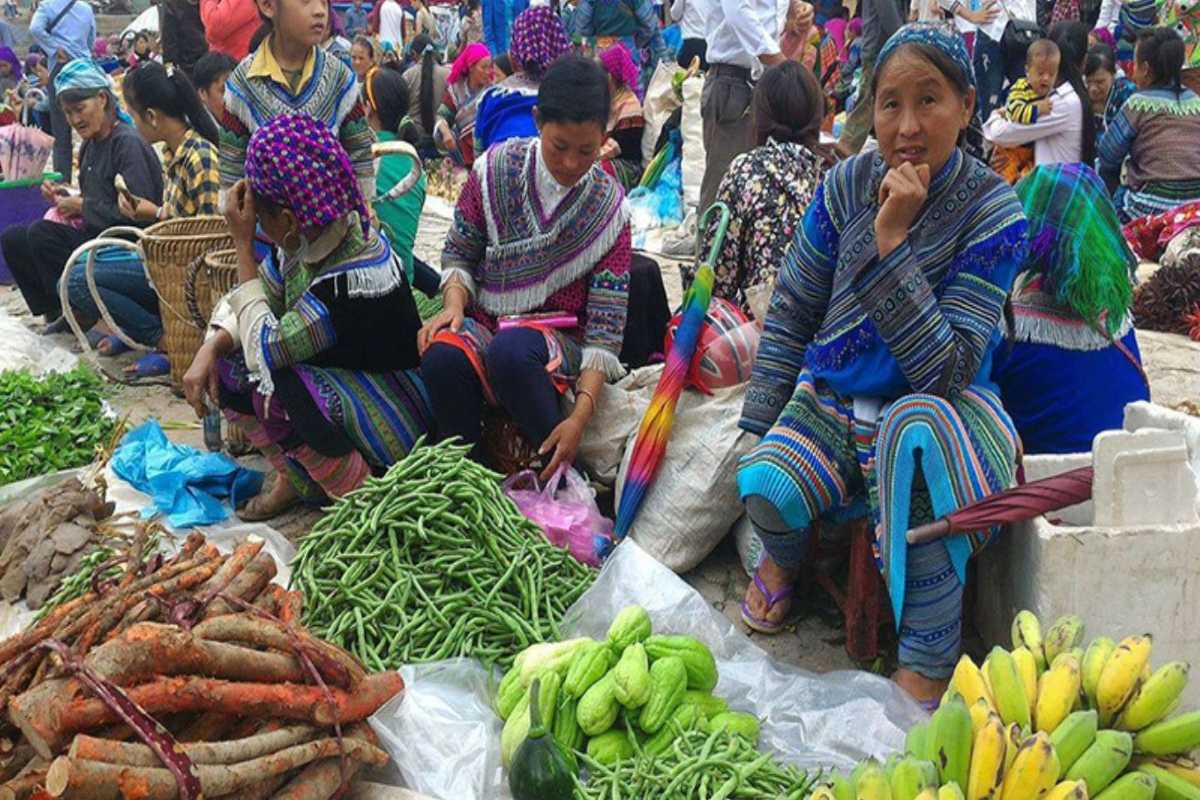
Communication and Connectivity in the Highlands
Staying connected during your visit to Cao Son Market can be a challenge due to its remote highland location in Vietnam. Understanding the availability of internet access and preparing for language differences will help you navigate smoothly and communicate effectively.
While mobile coverage is improving, expect spotty service in some areas around Cao Son Market. Being equipped with the right tools and local knowledge ensures you remain reachable and able to engage with locals during your trip.
Follow these practical tips to enhance your communication and connectivity in the highlands.
Mobile Coverage, SIM Cards, and Language Tips
Here’s what you need to know for staying connected and communicating near Cao Son Market:
- Mobile Coverage: Signal strength varies; some remote spots may have weak or no reception, especially inside valleys or dense forest areas.
- SIM Cards: Major Vietnamese providers like Viettel and Mobifone offer reliable coverage and affordable prepaid SIM cards. Purchase these easily in cities like Lao Cai or Sapa before heading to the market.
- Data Plans: Choose data packages with ample allowance for maps, messaging apps, and translation tools, as Wi-Fi is rare around Cao Son Market.
- Language Basics: Learning simple Vietnamese greetings and phrases goes a long way. For deeper connection, try to learn a few words from local ethnic languages like Hmong or Dzao.
- Translation Apps: Download offline translation apps before traveling. These apps help bridge language gaps even without internet.
- Respectful Communication: Use smiles, gestures, and patience. Locals appreciate efforts to communicate respectfully despite language differences.
By preparing your mobile setup and language skills, you’ll enjoy a richer, smoother experience at Cao Son Market and its surroundings.
For additional travel support and connectivity advice, contact Asia Travel Links to help you prepare thoroughly for your journey.
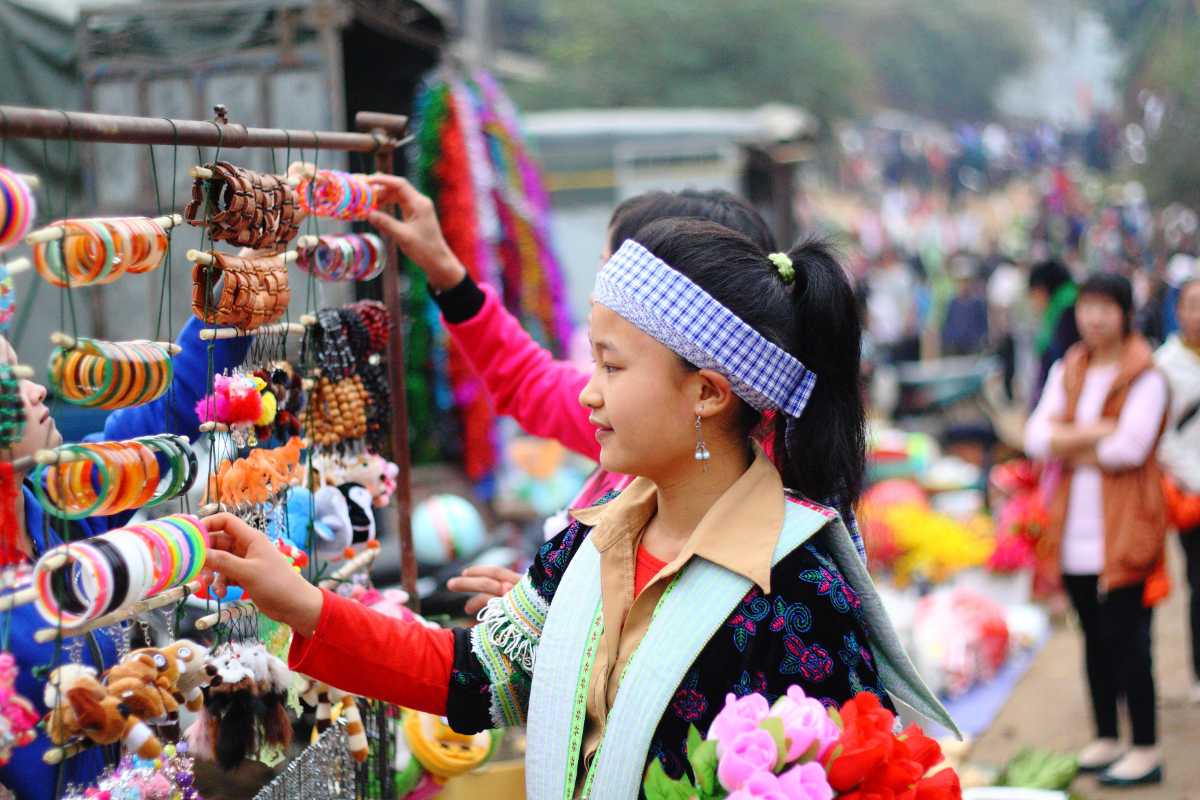
Responsible & Enriching Travel at Cao Son Market
Traveling to Cao Son Market offers more than sightseeing; it is an opportunity to engage with a living culture while protecting the community and environment. Embracing responsible tourism Cao Son means respecting local traditions, supporting sustainable practices, and ensuring your visit benefits both people and place. By choosing ethical travel options and practicing cultural sensitivity, you contribute to preserving this unique highland heritage for future generations.
Make your trip a positive force by adopting mindful travel habits and supporting community-driven initiatives around Cao Son Market.
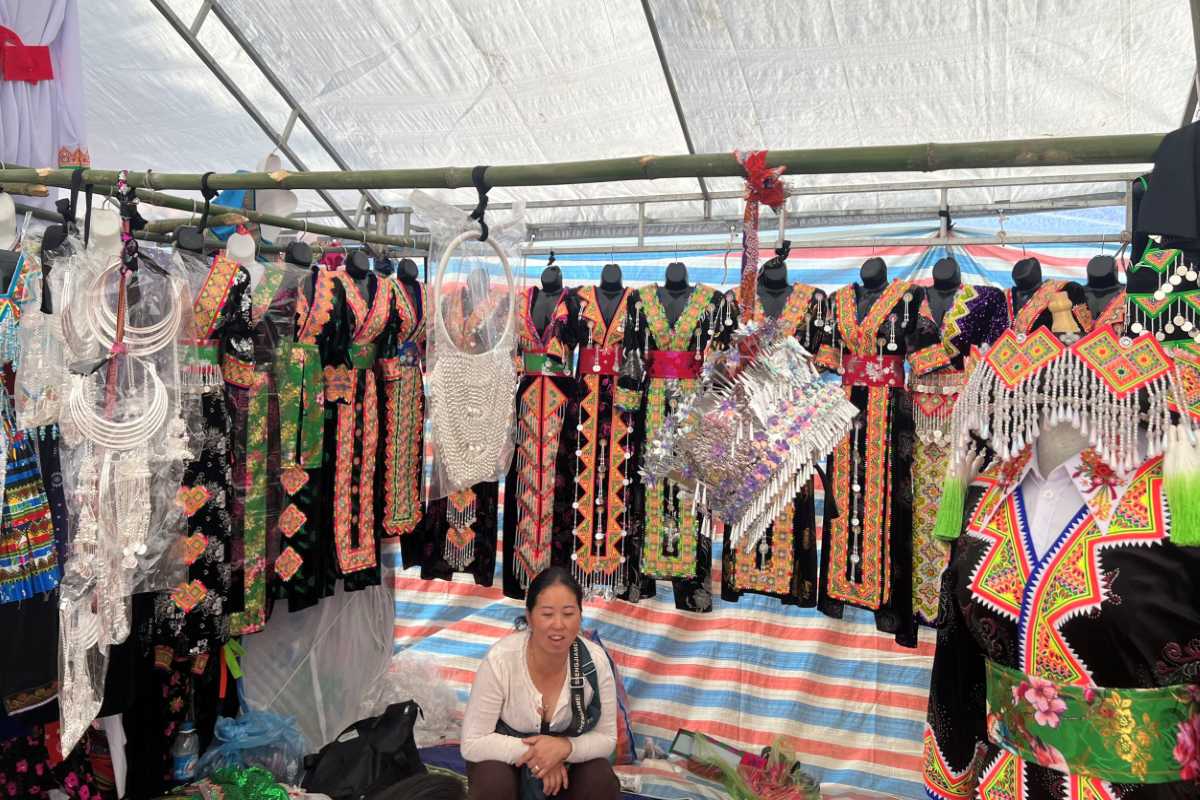
Sustainable Tourism and Cultural Respect
Mindful travel at Cao Son Market is essential to maintaining its authenticity and vitality. This market thrives because of its deep cultural roots and the resilient communities that sustain it. When you visit, view your experience as a chance to help preserve these traditions. Supporting local artisans, learning about the cultural significance behind their crafts, and respecting social norms all contribute to cultural preservation Vietnam and strengthen community ties.
Travelers who embrace these values foster community support tourism that sustains livelihoods while honoring heritage. Your respectful presence helps ensure that Cao Son Market remains a vibrant hub of tradition and exchange.
How to Be a Mindful Visitor and Support Local Communities
Follow these practical steps to travel ethically and make a positive impact at Cao Son Market:
- Ask Permission: Always request consent before photographing individuals or their belongings.
- Avoid Direct Gifts to Children: Instead of giving candy or money directly, consider donating to local schools or community projects.
- Buy Local: Purchase goods directly from producers to ensure fair compensation.
- Minimize Waste: Carry reusable containers and pack out all trash to keep the environment clean.
- Choose Ethical Tours: Opt for operators who prioritize community benefit and sustainable practices.
- Respect Traditions: Observe local customs with openness and humility, avoiding disruptive behavior.
By adopting these actions, you show genuine care for Cao Son Market and its people while enriching your own travel experience.
Conservation and Cultural Preservation Efforts
Several initiatives near Cao Son Market focus on environmental care and cultural heritage preservation. Community-led waste management projects work to reduce pollution in the fragile mountain ecosystem. Cultural centers promote traditional crafts and oral histories, inviting visitors to learn and contribute. Visitors are encouraged to respect sacred sites and local rituals, recognizing their vital role in the social fabric.
Engaging with or supporting these efforts amplifies your positive impact and connects you more deeply with the heart of Lao Cai’s highland culture.
Travel responsibly and help keep Cao Son Market a thriving, authentic destination for generations to come.
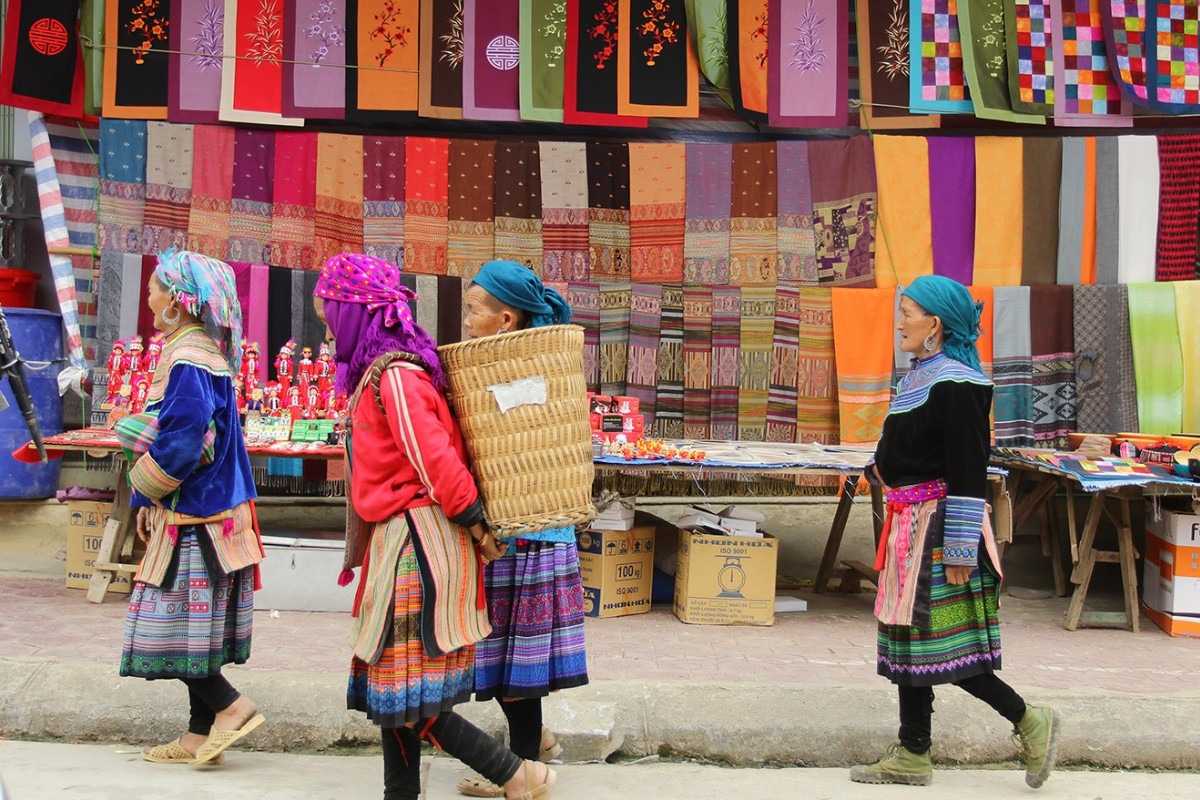
Travel Tips for Every Kind of Explorer
Whether you are traveling solo, with family, or seeking adventure, Cao Son Market offers experiences that cater to all kinds of explorers. Understanding your unique needs can help you enjoy the market and its surroundings to the fullest. From managing logistics for families to finding thrilling off-the-beaten-path treks, tailored advice ensures your visit is smooth and memorable. Embrace these Cao Son Market tips to make your journey more rewarding and stress-free.
Plan your visit with confidence, knowing the market welcomes travelers of every style.
Advice for Families, Adventurers, and Culture Lovers
Visiting Cao Son Market means different things for different travelers. Whether you come as a family, an adventure seeker, or a culture lover, knowing what to expect and how to prepare will enhance your experience.
- For Families: Navigating Cao Son Market with children requires some preparation. Strollers are rarely practical on uneven paths, so comfortable walking shoes are a must. Keep kids engaged by exploring lively livestock trading or watching artisans at work. Pack snacks and water, and familiarize yourself with basic toilet locations to ease the day.
- For Adventurers: Beyond the market, discover challenging treks through rugged landscapes and hidden villages. Prepare for sudden weather shifts by packing layers and rain gear. Seek opportunities for cultural immersion by joining local homestays or guided treks to lesser-known trails.
- For Culture Lovers: Maximize interactions with local ethnic groups by learning simple greetings and showing respect for customs. Attend informal performances or community gatherings when possible, and observe the intricate rituals and traditional attire that bring the market to life.
These tailored tips help all types of travelers connect deeply with the authentic spirit of Cao Son Market. Prepare accordingly to make your journey memorable.
The Rodriguez Family's Fun Day: Engaging Kids at Cao Son Market
Traveling with children at Cao Son Market presents unique joys and challenges. Understanding how to keep kids interested and comfortable can make the day truly special.
Our family found the market’s lively scenes—from livestock parades to colorful ethnic costumes—captivating for our kids. They were especially fascinated by watching craftspeople at work and tasting sticky rice treats. Managing bathroom breaks and energy levels required planning, but the friendly locals helped make everything easier. This hands-on cultural immersion not only entertained our children but created lasting family memories.
Family travelers will find Cao Son Market a rewarding destination, offering engaging experiences that welcome all ages.
Essential Dos and Don’ts for Your Visit
Respect and cultural sensitivity are key to a positive visit at Cao Son Market. Knowing simple etiquette ensures you blend in smoothly and enjoy authentic interactions.
- Do smile and greet locals politely; kindness goes a long way.
- Do try local foods to fully experience the market’s culinary culture.
- Don’t touch people’s heads—this is considered disrespectful.
- Don’t point with your feet, as it is seen as rude in Vietnamese culture.
- Don’t litter; always carry your trash with you or dispose of it responsibly.
- Don’t take photos of people without their permission to respect privacy.
Following these guidelines helps preserve the market’s warm atmosphere and fosters meaningful connections. Travel thoughtfully to make the most of your Cao Son Market experience.
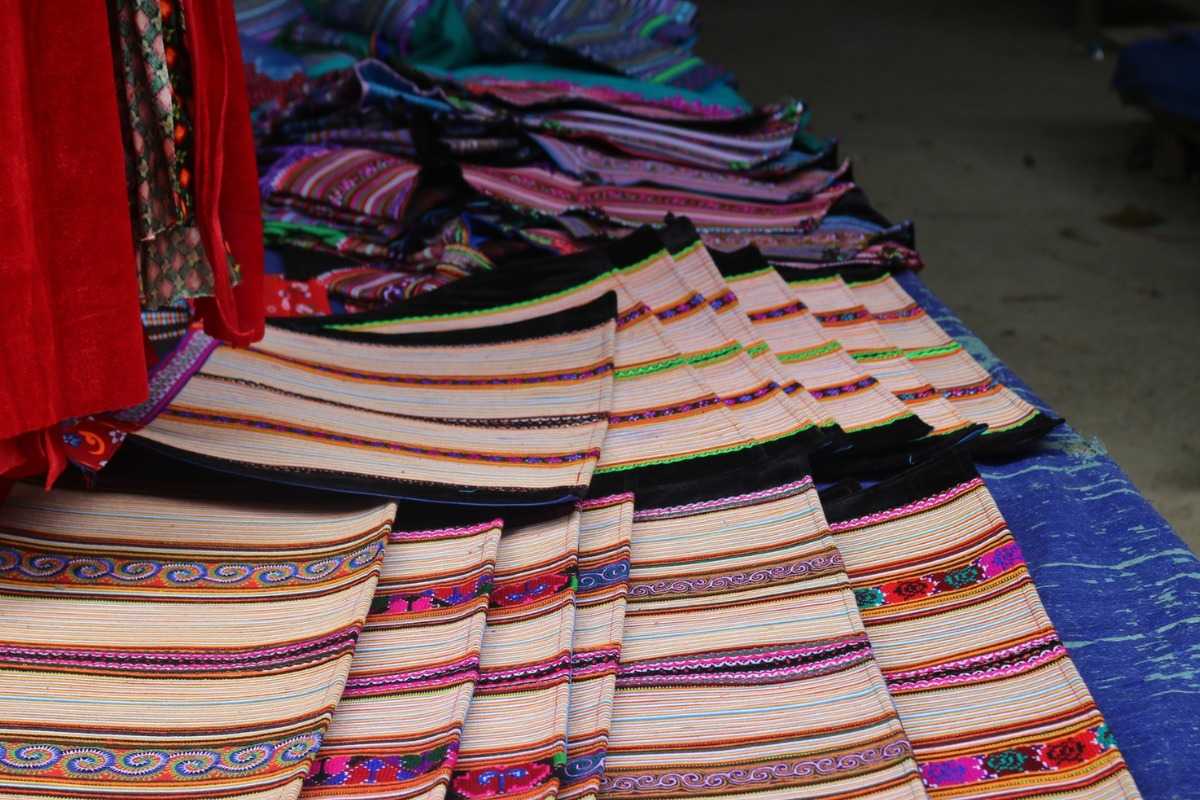
Safety, Comfort, and Accessibility
When visiting Cao Son Market, it’s important to plan for your safety and comfort while being aware of any accessibility challenges. Being prepared will help you enjoy the market fully and avoid unnecessary stress. Understanding how to protect your belongings, maintain your health, and navigate the terrain ensures a smooth and worry-free experience at this vibrant highland market.
Take these safety and comfort tips seriously to make your visit as enjoyable as possible.
Staying Safe in Crowded Market Settings
Markets like Cao Son Market can become crowded and busy, so staying vigilant about your personal safety is key. Protecting your belongings and being aware of your surroundings will help prevent unwanted issues.
- Secure Your Valuables: Use cross-body bags or money belts to keep wallets, phones, and cameras close and safe.
- Stay Alert: Be mindful of pickpockets, especially in congested areas, though theft is rare in this local market.
- Avoid Flashy Displays: Keep expensive jewelry or large amounts of cash out of sight to reduce risk.
- Travel in Groups: If possible, explore with others to increase security and comfort.
- Trust Your Instincts: Leave any situation or person that feels suspicious and report concerns to local authorities or guides.
Applying these safety tips at Cao Son Market will help you stay secure and focus on the rich cultural experience.
Health, Hygiene, and Accessibility Considerations
Maintaining your health and understanding accessibility conditions will ensure a comfortable visit to Cao Son Market and its surroundings.
- Drink Only Bottled Water: Avoid tap water to prevent illness. Always carry a refillable water bottle and purchase sealed bottles at the market.
- Choose Busy Food Stalls: Select vendors with high turnover and freshly cooked food to minimize foodborne risks.
- Basic Restroom Facilities: Expect simple toilets; carry tissues and hand sanitizer.
- First Aid Essentials: Bring a small kit with plasters, antiseptic wipes, and any personal medication.
- Accessibility Challenges: Terrain can be uneven and paths crowded. Travelers with mobility issues should prepare accordingly, as ramps and wheelchair access are limited.
Following these health tips for Cao Son Market and understanding local conditions helps you stay safe, well, and comfortable throughout your visit.

Make the Most of Your Visit: Insider Advice & Community Tips
Exploring Cao Son Market is a rewarding journey, especially when guided by the wisdom of travelers who’ve been there before you. Drawing on authentic insights and shared experiences, this section brings you practical advice and answers to common questions. By tapping into this community knowledge, you can navigate the market confidently and make the most of your visit, avoiding common pitfalls while uncovering hidden gems.
Engage with these insider tips to enhance your Cao Son Market adventure and connect with a vibrant travel community.

Real Experiences from Travelers Who’ve Been
Visitors to Cao Son Market often describe it as a place that feels alive with tradition and warmth. Many travelers share how arriving early allows them to witness the market’s authentic rhythms before the crowds swell. One recent visitor said, “Walking through the market felt like stepping back in time — the colors, sounds, and smells were unforgettable.” Others highlight the friendliness of the locals and the unexpected joy of simple conversations, despite language barriers.
These genuine stories provide reassurance that Cao Son Market delivers a meaningful and memorable experience for all who visit. Learning from these shared experiences helps new travelers prepare and appreciate the market’s cultural depth.
Top Tips Shared by Recent Visitors
To help you get started, here are some of the best tips from seasoned visitors to Cao Son Market:
- Arrive Early: Aim for 6:00 to 7:00 AM to catch the market’s lively setup and avoid large crowds.
- Bring Small Cash: Carry plenty of small denominations of Vietnamese Dong for easier transactions.
- Be Open to Interaction: Even with a language barrier, a smile and patience go a long way in connecting with vendors.
- Wear Comfortable Shoes: The market’s terrain can be uneven and requires sturdy footwear.
- Respect Local Customs: Always ask permission before photographing people or their goods.
Following these practical tips will enrich your visit and help you navigate the market like a local.
Common Surprises and What to Watch For
While Cao Son Market offers a unique cultural experience, there are a few things visitors should be ready for:
- Scale of Livestock Trading: The sheer number of animals like buffalo and pigs can be surprising and may cause noise or strong smells.
- Language Barrier: English is rarely spoken; having a translation app or phrasebook helps communication.
- Basic Facilities: Expect limited restroom options and modest amenities.
- Sudden Weather Changes: The highland climate can shift quickly, so be prepared for rain or fog.
- Cash Only: Most transactions require cash; cards are not accepted.
Being aware of these realities will help you manage expectations and enjoy the market without surprises.

Questions Answered: Cao Son Market FAQs
When planning your visit to Cao Son Market, you likely have many questions. This FAQ section provides clear, reliable answers to common queries, helping you prepare confidently and avoid last-minute surprises. Whether about schedules, etiquette, or practicalities, these responses cover what you need to know for a smooth, enjoyable visit.
Gain quick clarity on key aspects of the Cao Son Market experience before you go.
Market Schedules, What to Expect, and Local Etiquette
- What day is the market held?
The main market day is every Wednesday, starting early morning around 6:00 AM and winding down by midday. - What time does Cao Son Market open and close?
Vendors begin setting up around 6:00 AM. The market is busiest between 7:00 AM and 11:00 AM, after which activity gradually slows. - How should I interact with locals?
Politeness and patience are key. Always greet with a smile, ask permission before taking photos, and respect personal space. - Are there restroom facilities?
Facilities are basic and limited, often simple pit latrines near the market. Prepare accordingly. - Is it safe to eat street food here?
Choose busy food stalls where dishes are freshly cooked and served hot to ensure hygiene.
Answers to Traveler’s Most-Asked Questions
- Is it safe to drink the water in Cao Son?
No. Always use bottled water to stay safe and healthy. - Are local guides available at the market?
Yes, some local guides offer tours that provide cultural insights and translation help. Booking through reputable operators is recommended. - What currency should I bring? Are credit cards accepted?
Vietnamese Dong (VND) is the only accepted currency. Bring enough cash in small denominations. Credit cards are not accepted. - Can I take photos of people and their goods?
Always ask for permission first. Many locals appreciate respectful requests and may even share stories about their crafts. - Is the market accessible for people with mobility challenges?
The terrain is uneven and crowded. Accessibility is limited, so plan accordingly.
These FAQs provide the essential information you need to navigate Cao Son Market smoothly and respectfully, helping you feel prepared and confident for your visit.

Let’s Hear from You!
Your journey to Cao Son Market is unique, and your stories matter. We invite you to share your experiences, photos, and tips with our growing Cao Son Market community. By contributing, you help fellow travelers discover authentic insights and keep the spirit of this remarkable market alive. Join the conversation and become part of a vibrant community passionate about Cao Son Market.
Your voice enriches the travel experience for everyone. Share your story today and connect with like-minded adventurers.
Share Your Cao Son Market Stories and Favorite Moments
We welcome you to submit your personal Cao Son Market stories, memorable moments, or helpful tips. Whether it’s a snapshot of vibrant market scenes, a cultural encounter, or a travel hack, your contributions bring this market to life for future visitors. Use the comments section below or upload your photos and stories through our submission form.
Sharing your experiences supports the community and builds a richer, more authentic travel resource for everyone exploring Cao Son Market.
How to Connect with Other Adventurers and Travelers
Keep the adventure going by connecting with other travelers who love Cao Son Market and Northern Vietnam. Join Facebook groups like “Northern Vietnam Travel Adventures” or “Vietnam Market Enthusiasts.” Participate in popular travel forums such as TripAdvisor’s Vietnam section, and follow hashtags like #CaoSonMarket and #ExploreNorthernVietnam on Instagram and Twitter.
These platforms offer ongoing support, inspiration, and a chance to swap stories with fellow explorers who share your passion for authentic travel experiences around Cao Son Market and beyond.

Why Cao Son Market Will Stay With You
Visiting Cao Son Market is more than a simple stop on your trip—it becomes a lasting memory etched deeply into your travel story. This vibrant market, set against the breathtaking backdrop of Northern Vietnam’s highlands, offers an experience that resonates long after you leave. It captures the raw beauty of rural life, the strength of traditional communities, and the warmth of genuine human connection. The impressions you take home from Cao Son Market are not just sights and sounds but emotions and stories that shape your understanding of this rich region. These are the unforgettable Vietnam experiences that inspire reflection and a longing to return.
Every visit to Cao Son Market leaves an indelible mark on your heart. Let the impact of your travel here deepen your appreciation for authentic journeys and encourage you to explore even further.

Lasting Memories and Unforgettable Impressions
The memories of Cao Son Market linger long after your journey ends. You carry with you the resilience of the highland communities—people whose vibrant spirit shines through in every smile, barter, and greeting. Their hospitality wraps around you like a warm blanket, inviting you into a world that balances ancient traditions with the challenges of modern life.
At Cao Son Market, you witness a cultural tapestry woven with colors, voices, and smells that awaken your senses and spark your curiosity. The immersive experience is a rare gift, one that transforms casual visits into moments of genuine connection and emotional richness. These unforgettable Vietnam experiences remind you why travel matters—how it changes us, shapes our stories, and deepens our empathy.
Reflect on these moments and allow the emotional impact of your visit to inspire your future travels and conversations.
The Spirit of the Highlands and the Warmth of Its People
The essence of Cao Son Market lies in the enduring spirit of its people and the culture that thrives here. Nestled in the heart of Lao Cai, this market offers a rare glimpse into a way of life shaped by the rhythms of the land and the strength of tradition. The local communities—rooted in generations of highland culture—navigate modern challenges with resilience and grace.
Visiting Cao Son Market means stepping into this vibrant world, where every gesture, craft, and exchange tells a story of heritage and hope. The warmth of the people invites you to become more than an observer; you become part of a shared experience that celebrates both difference and common humanity. This connection fosters a deep respect for the spirit of Northern Vietnam and its remarkable people.
As you reflect on your time here, the cultural richness and heartfelt encounters will remain a defining highlight of your travel memories.
Chris's Lingering Legacy: How Cao Son Changed My Perspective
Travel often offers new sights, but sometimes, if you're open to it, a place can fundamentally shift your inner landscape. My journey to Cao Son Market wasn't just another stamp in my passport; it was a profound, almost spiritual encounter that created a Cao Son lasting impact, truly a transformative travel Vietnam experience. It wasn’t just a destination; it became a catalyst for personal growth travel.
I've always considered myself fairly adaptable, comfortable in bustling cities and remote villages alike. But the sheer untouched authenticity of Cao Son was different. The market itself was a kaleidoscope of vibrant life, but it was a specific interaction, a quiet moment, that became my turning point.
Amidst the cheerful chaos, I saw an elderly woman, her face deeply lined with years of sun and labor, selling small, hand-woven baskets. Her goods were simple, practical, yet each basket was perfectly formed. I bought one, and as she handed it to me, she held my gaze. Her eyes, ancient and wise, held a quiet dignity. There was no pushiness, no expectation, just a serene acceptance. Through my guide, I learned she walked two hours each way, every market day, just to sell a few baskets. Two hours there, two hours back, carrying her wares, year after year.
This simple fact hit me with the force of a revelation. In my fast-paced Western world, convenience is king. We grumble about traffic, about slow Wi-Fi, about anything that adds a minute to our day. Yet, here was a woman, embodying profound resilience and an unyielding connection to her traditions and community, for whom a four-hour walk was simply part of the rhythm of life. There was no complaint, only quiet dedication.
That interaction shattered some of my unconscious assumptions. It broadened my worldview in an instant. I realized how much I, and many around me, take for granted – the ease of access to goods, the expectation of comfort, the relentless pursuit of speed. The dignity in her bearing, the quiet strength in her eyes, resonated deeply. It wasn't about pity; it was about immense respect for a way of life deeply rooted in self-sufficiency and communal ties, where time is measured differently, and effort is simply part of existence.
The enduring lesson from Cao Son Market is the power of quiet resilience and genuine human connection. It taught me to slow down, to truly observe, and to appreciate the profound dignity in simplicity. I carry that basket with me now, not just as a souvenir, but as a tangible reminder of that wise woman and the perspective shift she gifted me. It's a reminder to embrace life's journeys, however arduous, with quiet strength and a grateful heart.
The transformative power of Cao Son lies in its ability to strip away modern distractions and expose you to a fundamentally different way of life. The challenge isn't physical, but mental – it forces you to confront your own assumptions about convenience, progress, and happiness. My experience highlights that the most profound travel lessons often come from the most unassuming interactions, leading to genuine personal growth travel. It underscores the value of seeking out places that remain untouched by mainstream tourism, as they offer the clearest mirrors for self-reflection.
Actionable Practical Takeaways:
- Seek Out Unscripted Interactions: While guides are valuable, also allow for moments of unplanned observation and connection. Sometimes, the most profound lessons come from the quietest moments.
- Be Present, Not Just Observing: Put your phone away. Engage your senses. Try to absorb the atmosphere without constantly filtering it through a lens.
- Embrace Discomfort (Slightly): Acknowledge that the journey might be less polished than typical tourist routes. This prepares you for the authenticity and unique charm.
- Reflect During and After: Take moments to sit quietly and process what you're seeing and feeling. Journaling can help solidify these insights.
- Support Ethically: When you buy from artisans like the basket weaver, know that you are directly supporting a traditional livelihood and honoring their craft.
The echoes of Cao Son Market continue to resonate within me, a gentle, yet powerful reminder of the dignity, resilience, and quiet strength I witnessed. It remains a testament to transformative travel Vietnam truly offers, creating a Cao Son lasting impact that forever broadened my perspective.
Recommendation: If you are a traveler seeking more than just sights, if you crave an experience that challenges your perceptions and fosters genuine personal growth travel, then make your way to Cao Son Market. It's a journey that promises not just discovery of a place, but potentially, a profound and transformative travel Vietnam will give you – a powerful Cao Son lasting impact on your own worldview.

Planning Your Next Northern Vietnam Adventure
Your journey to Cao Son Market is just the beginning of what Northern Vietnam has to offer. Inspired by the rich culture and stunning landscapes you've experienced here, why not expand your travels to explore even more of this vibrant region? Whether you crave rugged mountain roads, serene natural beauty, or deeper cultural immersion, Northern Vietnam holds countless treasures waiting for your discovery. Use your time at Cao Son Market as a springboard for your next trip, building on your authentic experience and expanding your understanding of this fascinating part of the world.
Let your adventure continue—there is so much more to see and do beyond Cao Son Market.
Where to Go Next and How to Keep Exploring
Here are some remarkable destinations near Cao Son Market that offer equally authentic and captivating experiences:
- Ha Giang Loop from Lao Cai: Embark on one of Vietnam’s most challenging and scenic motorbike routes, winding through towering limestone peaks and remote villages, perfect for adventurous travelers seeking raw beauty and cultural depth.
- Mai Chau: Discover tranquil valleys framed by lush rice terraces, where ethnic Thai communities welcome visitors with traditional stilt houses, folk dances, and warm hospitality—a peaceful retreat rich in culture.
- Ba Be Lake: Explore Vietnam’s largest natural freshwater lake surrounded by towering karst mountains and dense forests. Enjoy boat cruises, waterfalls, and opportunities to stay with local Tay families for an immersive experience.
Each of these destinations complements your Cao Son Market visit, enriching your Northern Vietnam itinerary with diverse landscapes and cultural insights. Consider weaving them into your travel plans to deepen your connection to this extraordinary region.
Ready to extend your journey? Start planning your next unforgettable adventure beyond Cao Son Market today.

Ready to Experience Cao Son Market?
If you’re inspired by the rich culture and vibrant atmosphere of Cao Son Market, now is the perfect time to take the next step. Whether you’re planning your trip from scratch or looking for trusted local guidance, the journey to this authentic highland market awaits. Don’t let this unique opportunity pass you by—start organizing your visit with confidence and ease. Your unforgettable adventure at Cao Son Market is just a booking away.
Take action today to make your travel dreams a reality.
Book Your Trip, Find Trusted Local Guides, and Get Ready for the Journey
Here’s how to smoothly move from planning to experiencing Cao Son Market:
- Book Your Tour: Choose from expert-led tours specializing in Cao Son Market to get the most immersive experience.
- Find Accommodation: Reserve trusted local guesthouses or homestays near the market for authentic stays.
- Personalized Itinerary Planning: Contact Asia Travel Links for customized travel plans tailored to your preferences.
- Travel Support: Use reliable local guides to navigate logistics, culture, and language barriers confidently.
- Get in Touch: Reach out via email or WhatsApp at +84917506881 for expert advice and booking assistance.
Let Asia Travel Links help you unlock the true essence of Cao Son Market and Northern Vietnam. Your adventure starts now—book today!
Nhật Hoàng
Faqs
Cao Son Market is known for its authentic highland atmosphere and vibrant cultural exchanges among ethnic minority groups in Lao Cai province. It is a traditional weekly market that serves as a key social and economic hub for locals, featuring livestock trading, fresh local produce, handmade crafts, and colorful traditional attire.
Visitors experience a unique glimpse into the everyday life of ethnic communities such as the Hmong, Dao, and Tay. The market’s less-touristy nature allows for genuine cultural immersion without the commercial trappings seen in larger markets.
- A gathering place for diverse ethnic groups exchanging goods and news.
- Focus on livestock trading, including buffalo, pigs, and chickens.
- Traditional crafts and textiles sold directly by artisans.
- A vibrant display of colorful clothing and cultural rituals.
Discover the rich heritage and lively spirit that make Cao Son Market a must-visit destination in Northern Vietnam.
To reach Cao Son Market from Lao Cai city, you have several transport options depending on your budget and time. The market is located approximately 60 kilometers from Lao Cai, nestled in mountainous terrain.
You can take a private car or taxi for the most direct and comfortable journey, which usually takes around 1.5 to 2 hours. Public buses run less frequently and may require transfers, so planning ahead is essential.
- Private car or taxi: fastest and most flexible, ideal for groups.
- Local bus: available but may have limited schedules and indirect routes.
- Guided tours: often include transportation with added local insights.
Plan your route carefully and consider road conditions, especially during the rainy season, to ensure a smooth journey to Cao Son Market.
The best time to visit Cao Son Market is on its main market day, which typically occurs once a week, often on Wednesdays. Arriving early in the morning between 6:00 AM and 9:00 AM allows you to witness the market’s lively opening and authentic interactions.
Seasonally, the market is especially vibrant during the harvest months from September to November, when fresh local produce and traditional festivities abound. Avoid the rainy season (May to September) if possible, as road conditions may be challenging.
- Weekly market days are fixed, so check local schedules before your trip.
- Early mornings offer the richest sensory experience.
- Harvest season brings colorful produce and cultural events.
- Winter months are cooler and less crowded but may have fog.
Timing your visit well enhances the enjoyment of Cao Son Market’s unique atmosphere.
There are no entry fees to visit Cao Son Market. The market is an open, community space where locals and visitors alike are welcome to explore freely.
While access is free, be prepared to spend on goods, food, or optional activities like hiring a local guide or taking part in cultural experiences.
- No admission or ticket fees required.
- Costs are associated only with purchases or services.
- Supporting local vendors through shopping benefits the community.
Enjoy your visit to Cao Son Market without worrying about entrance costs.


